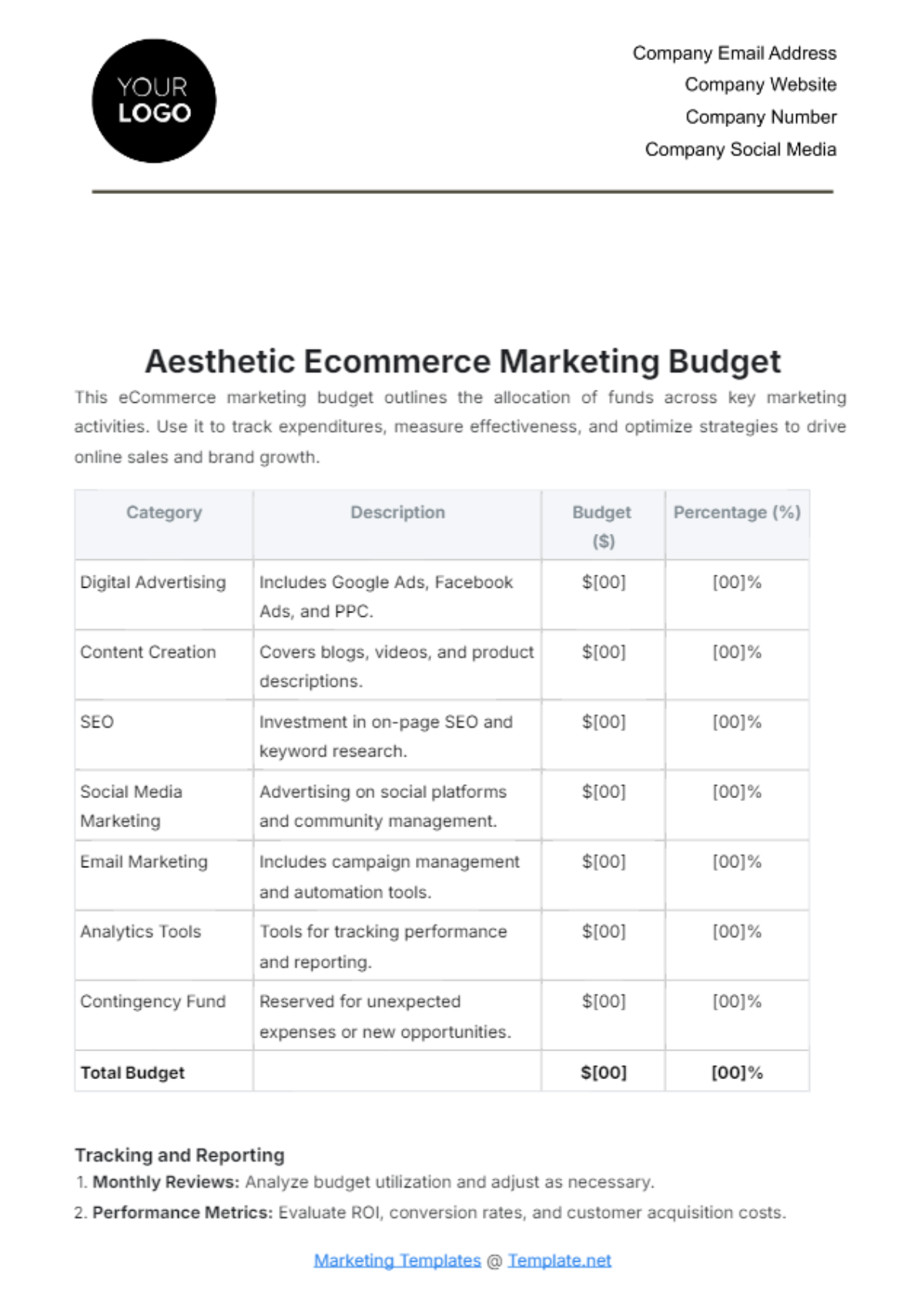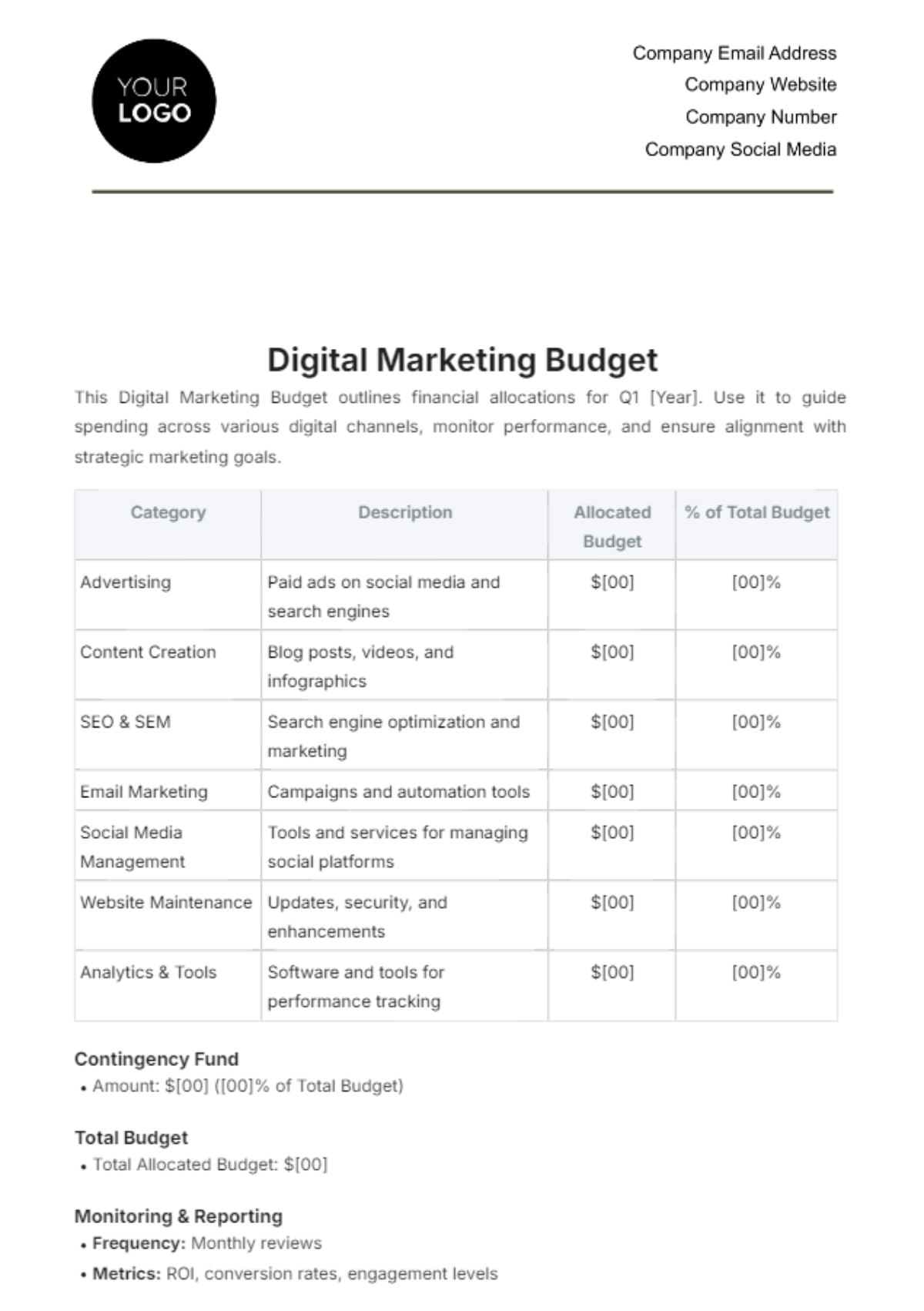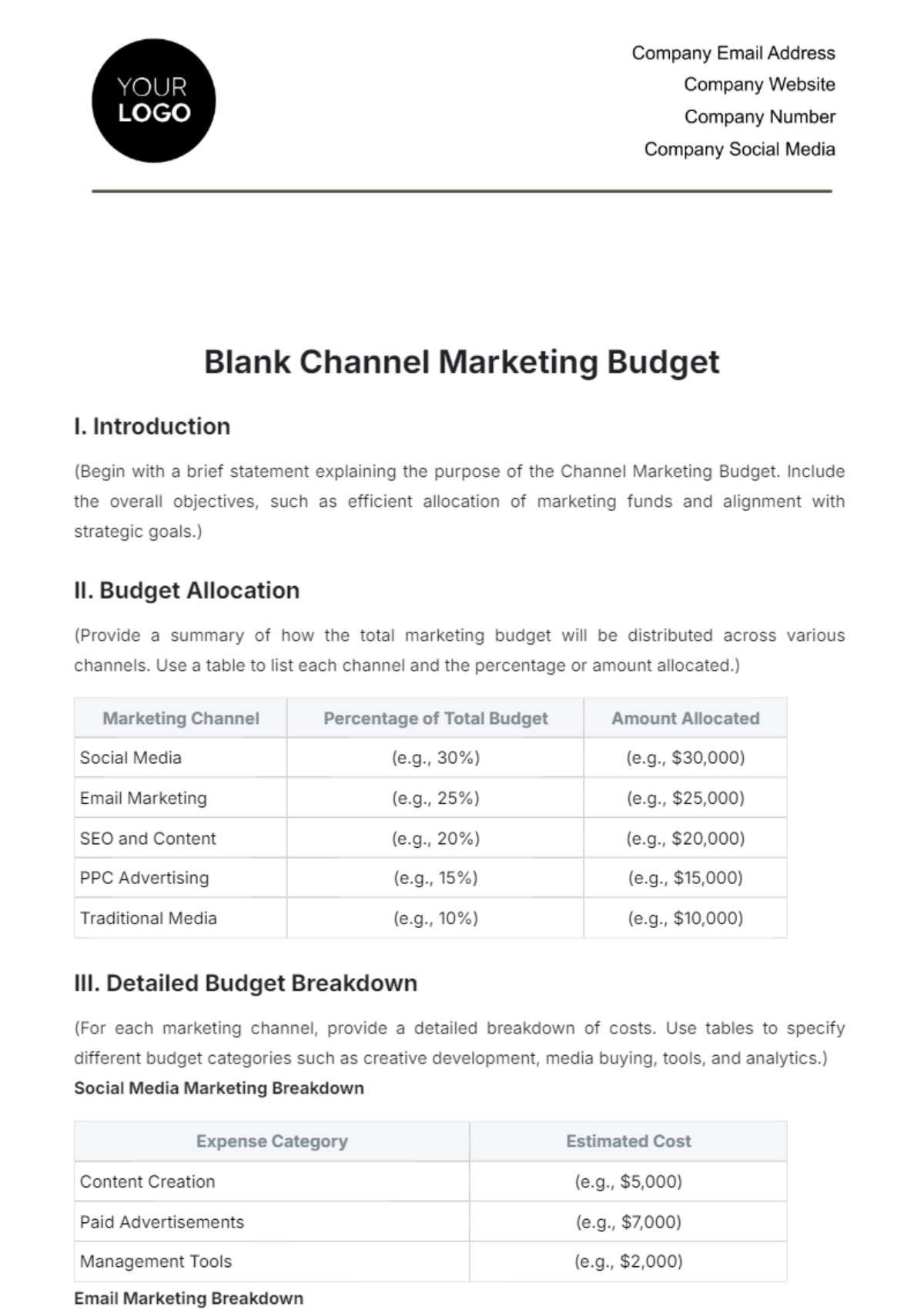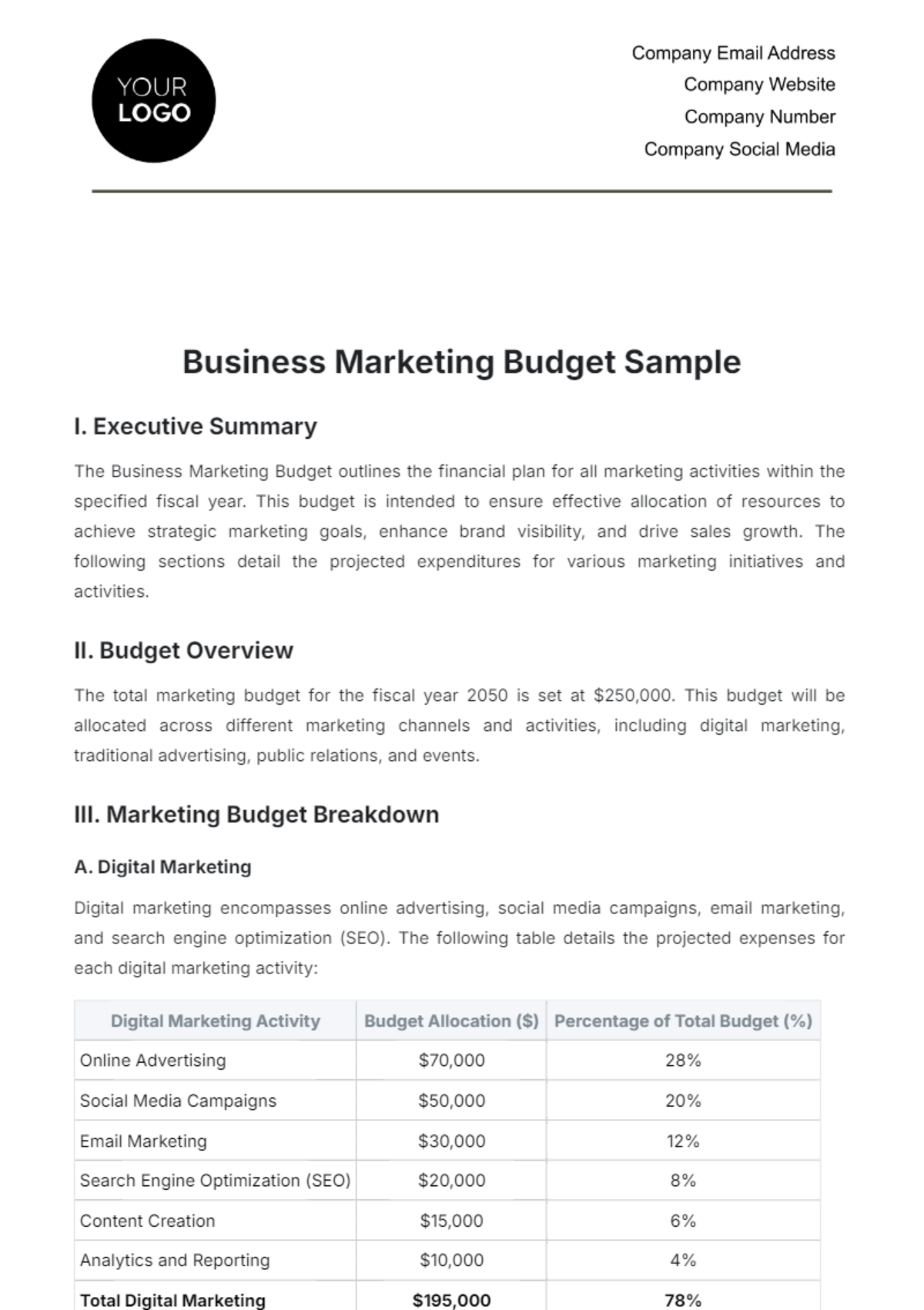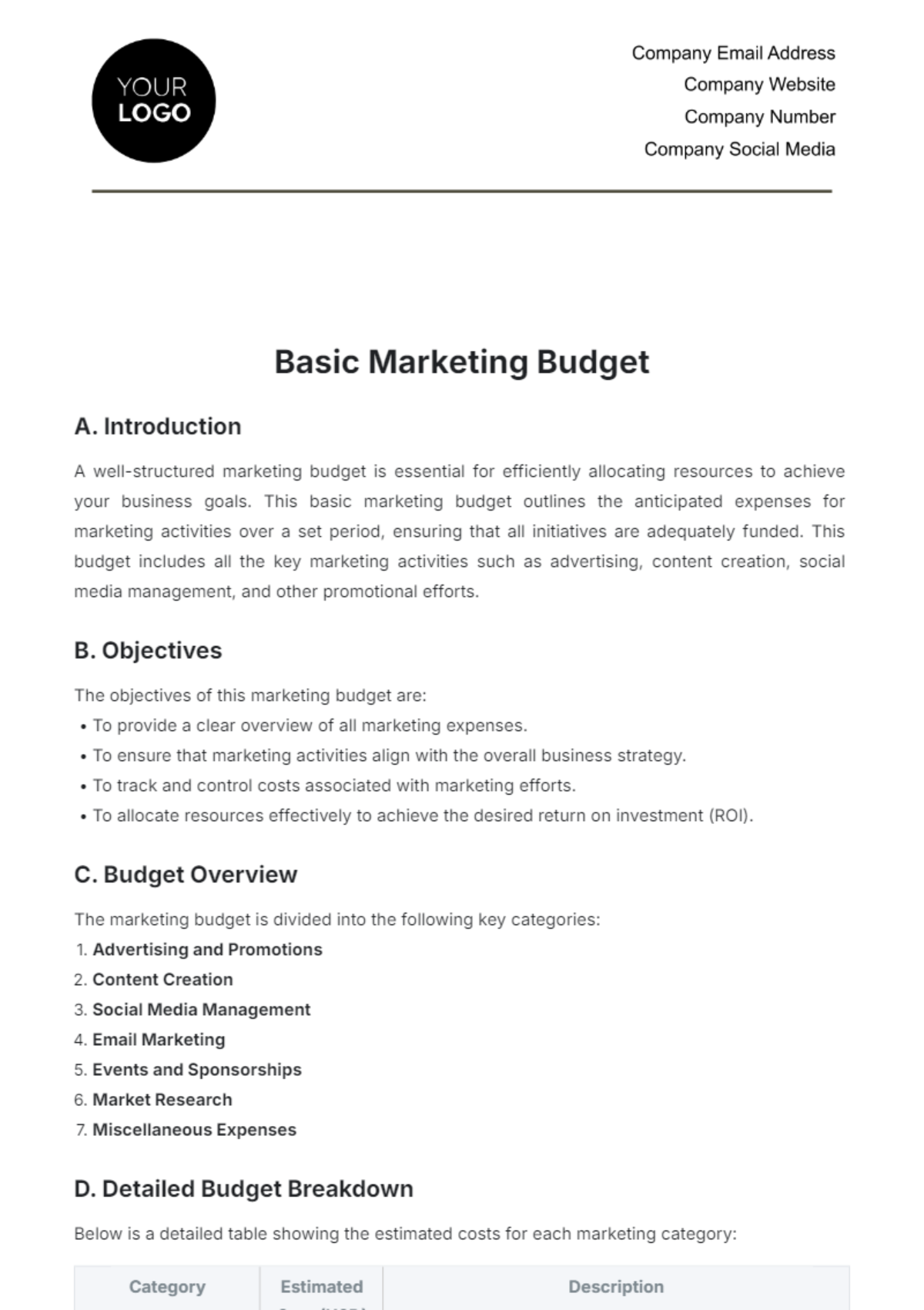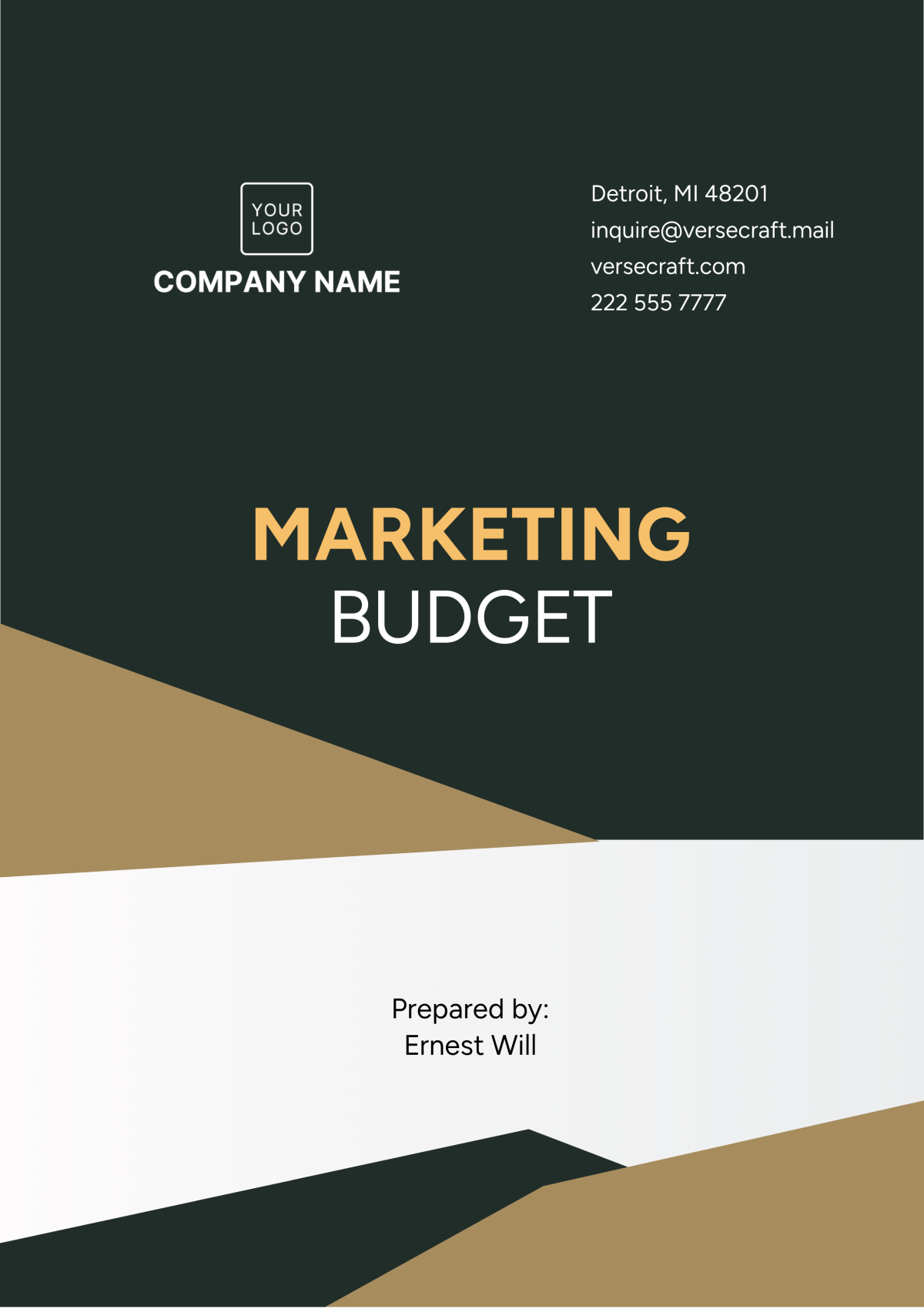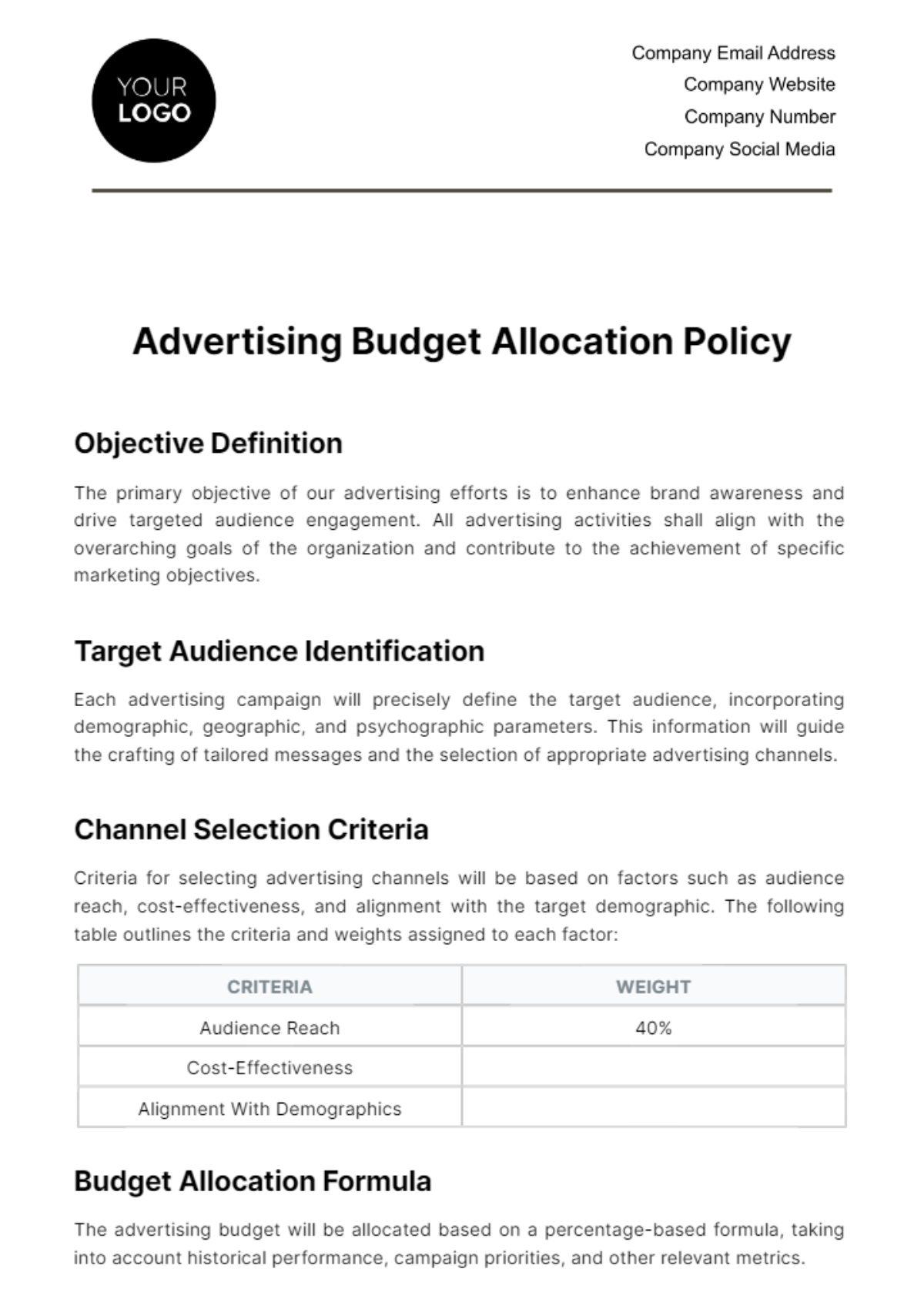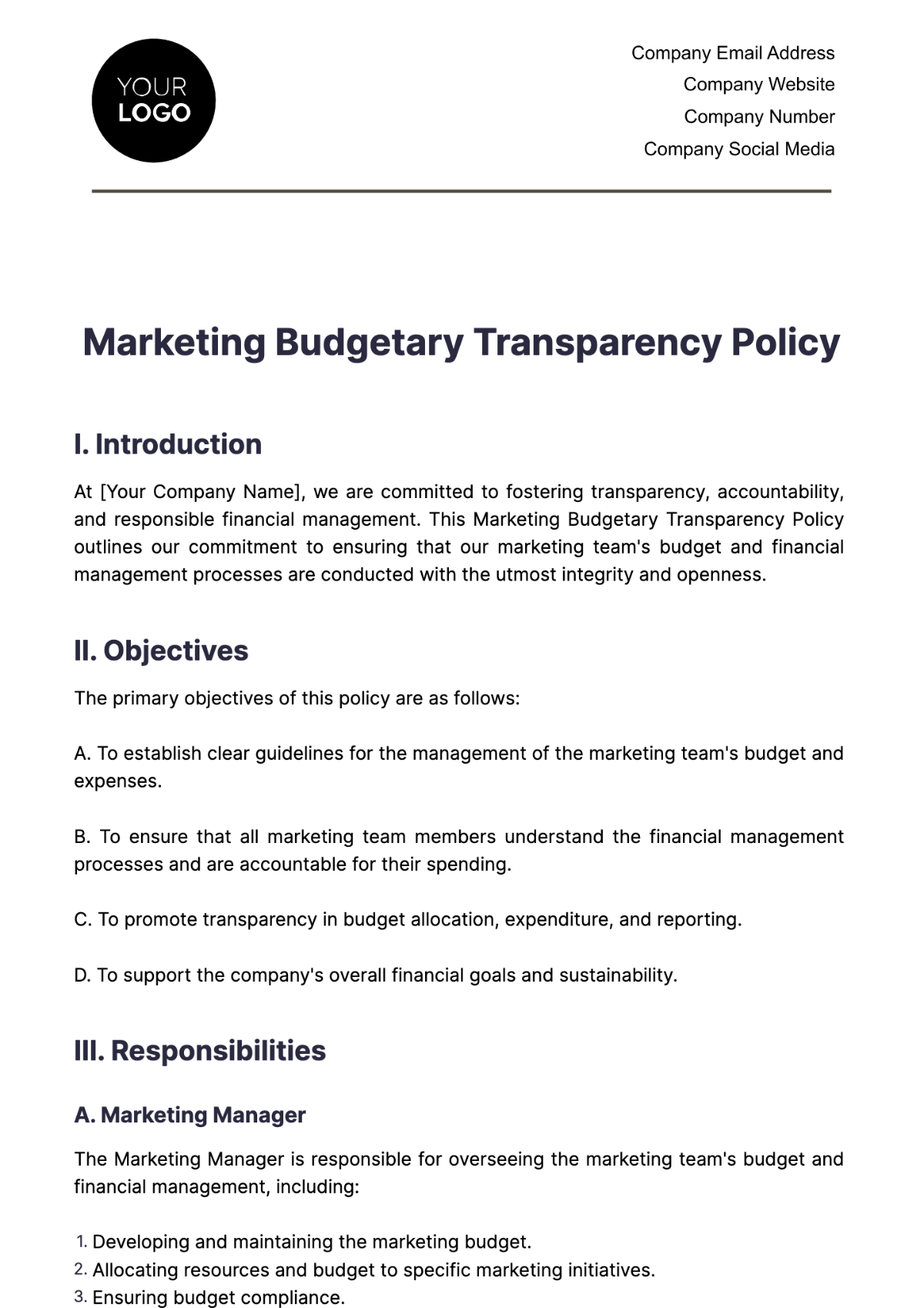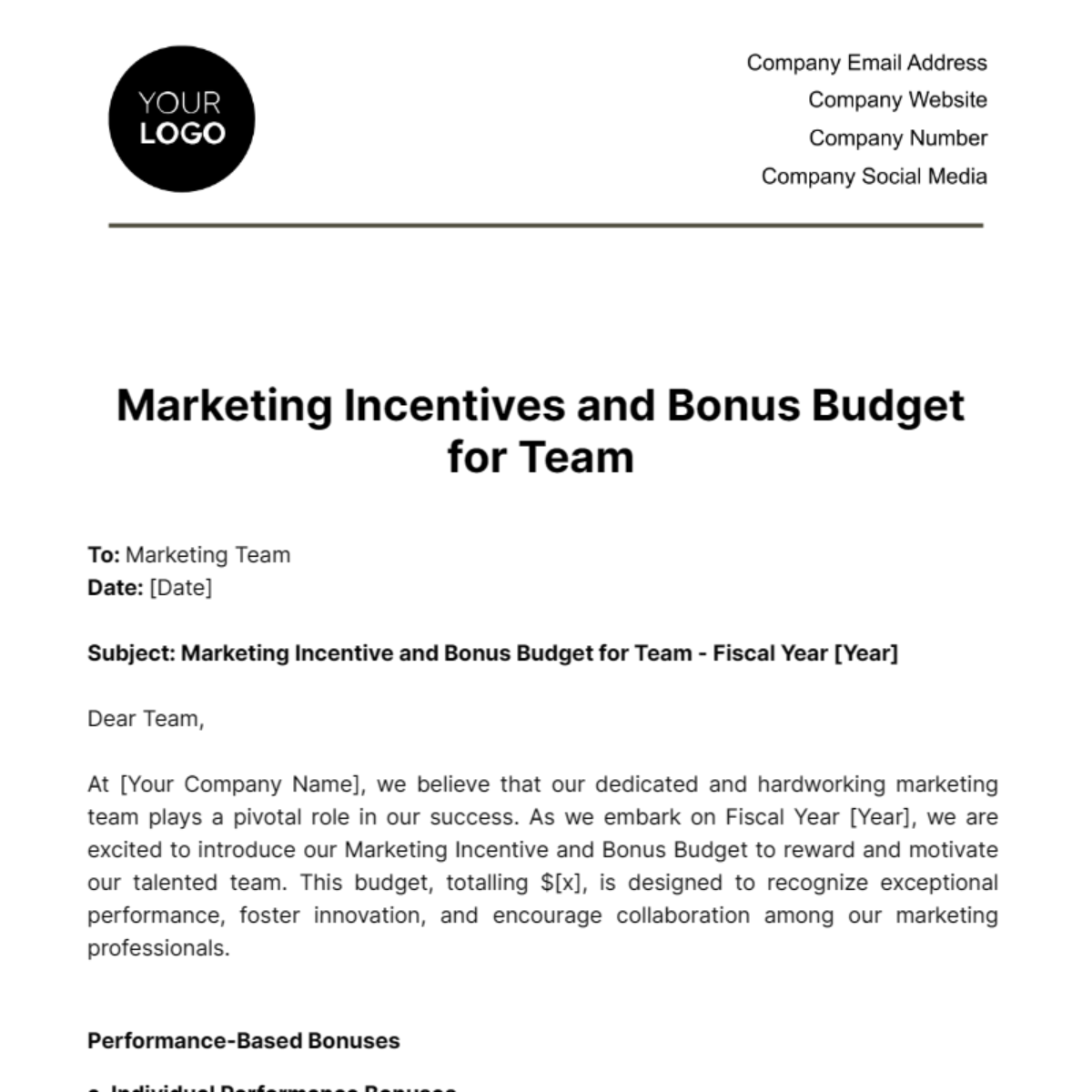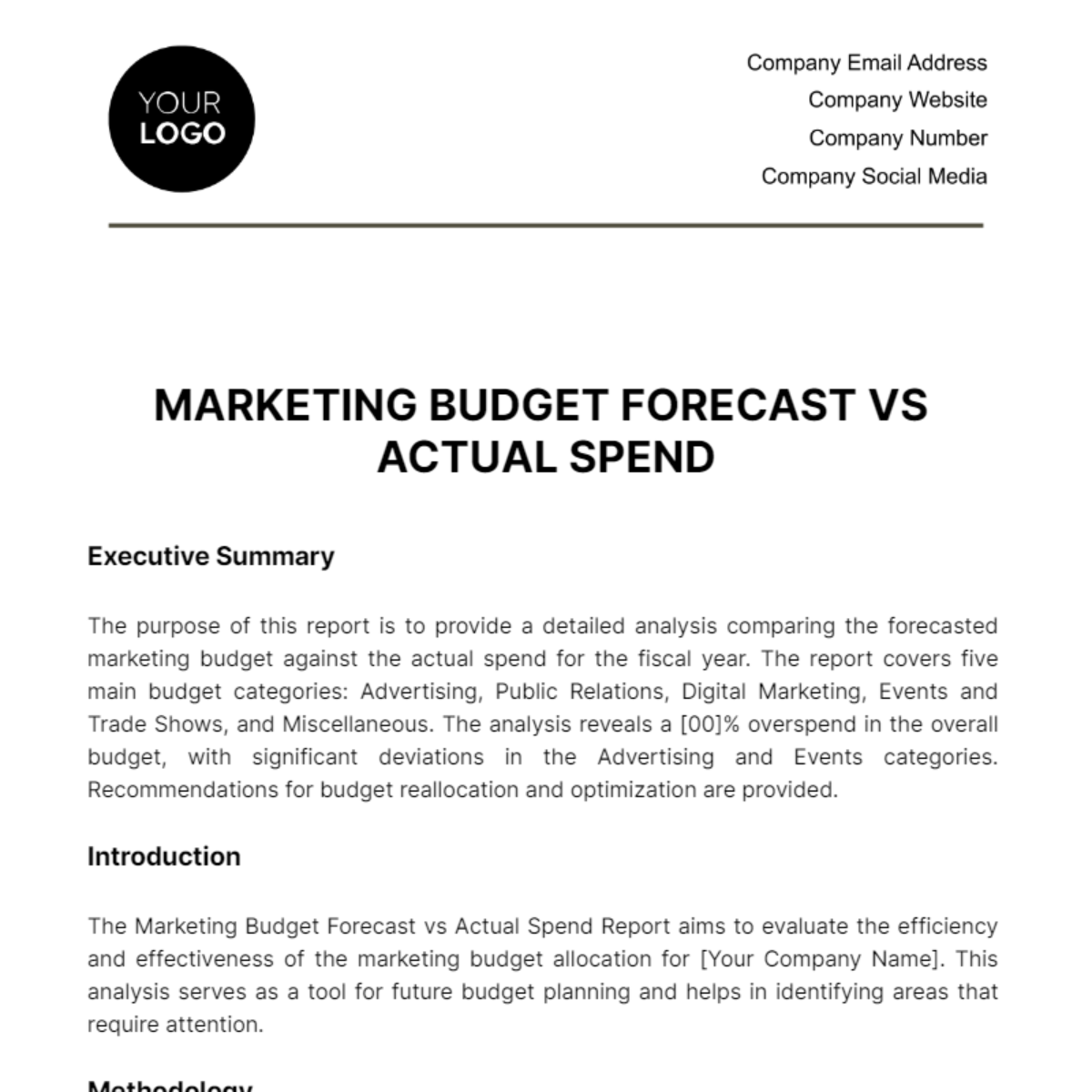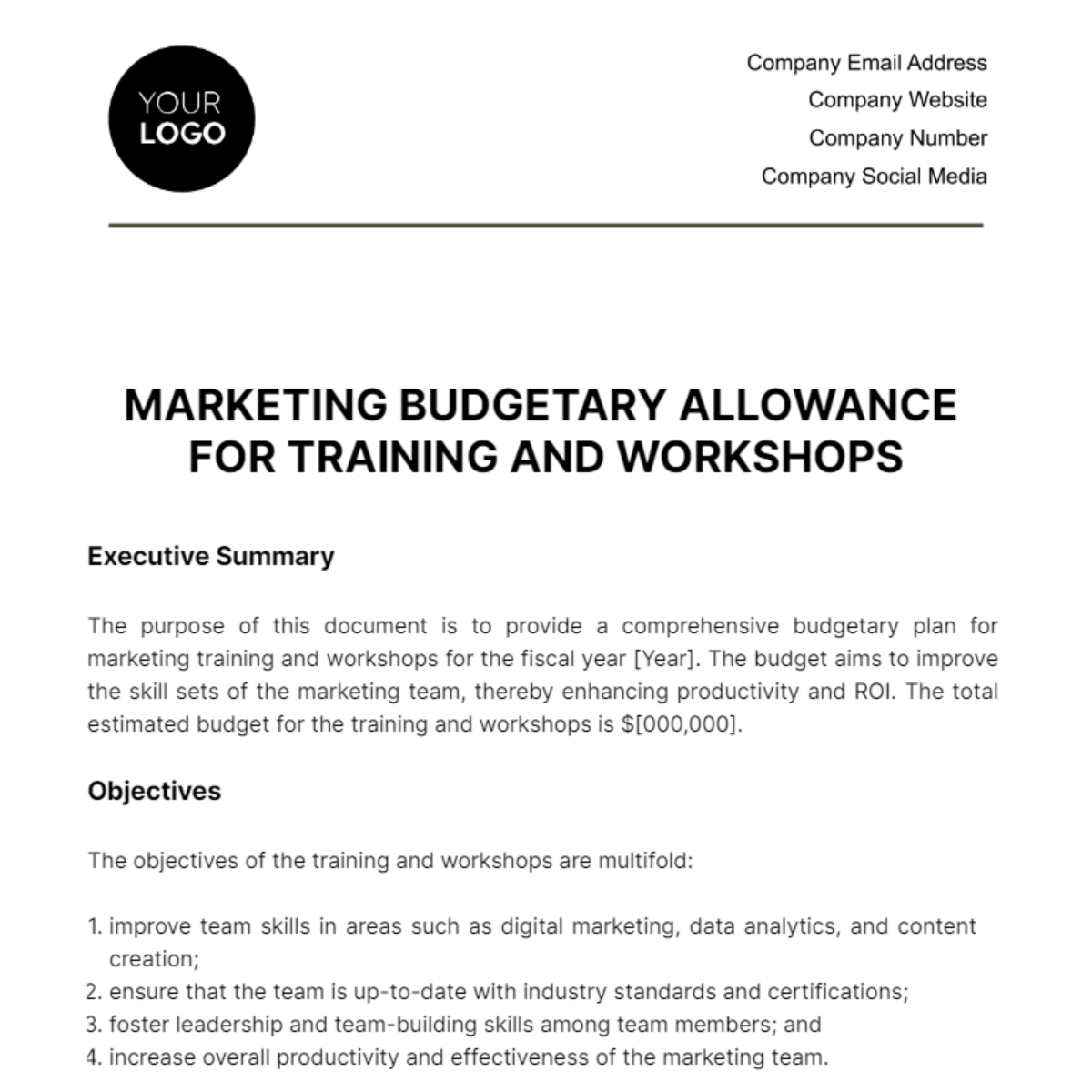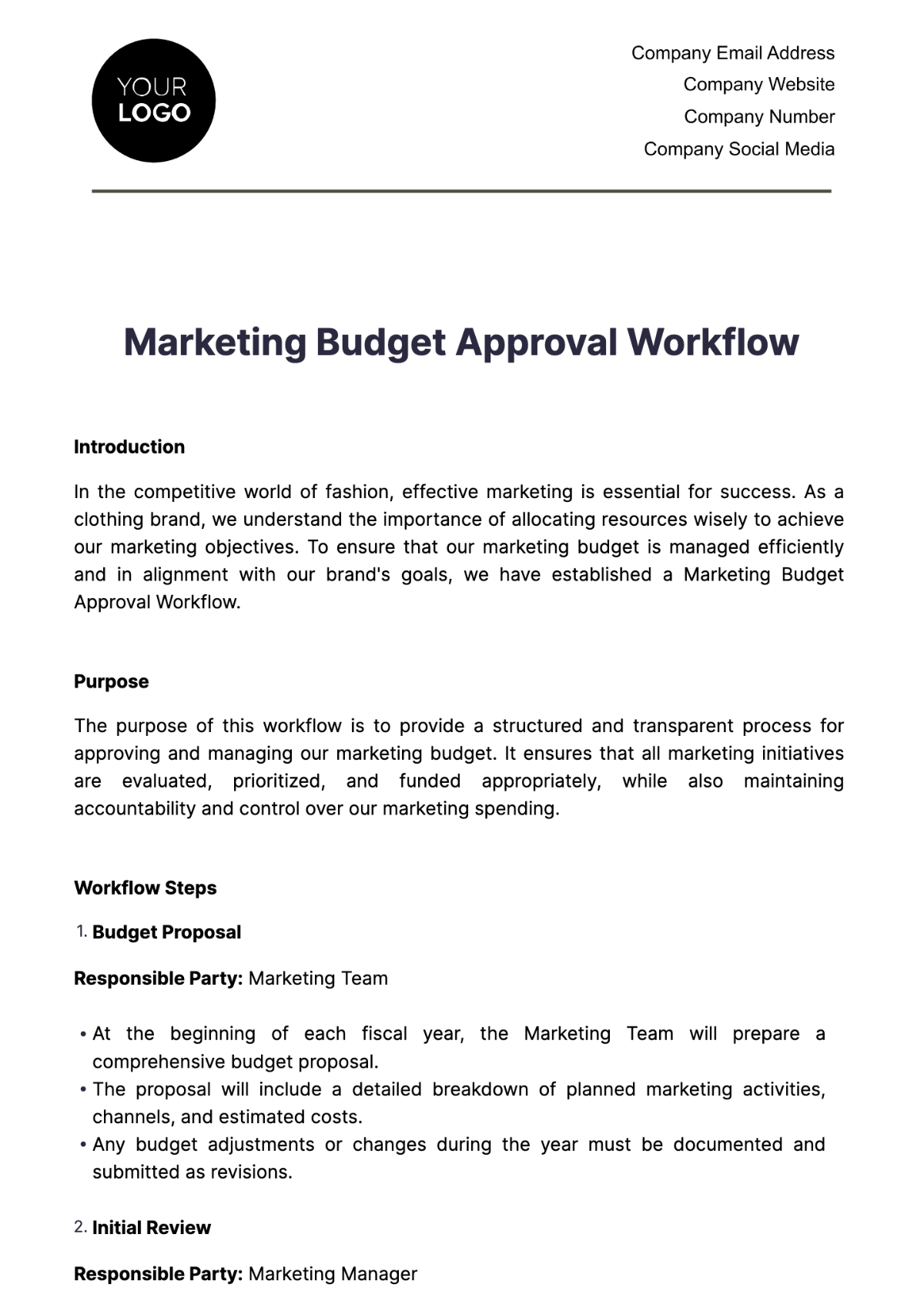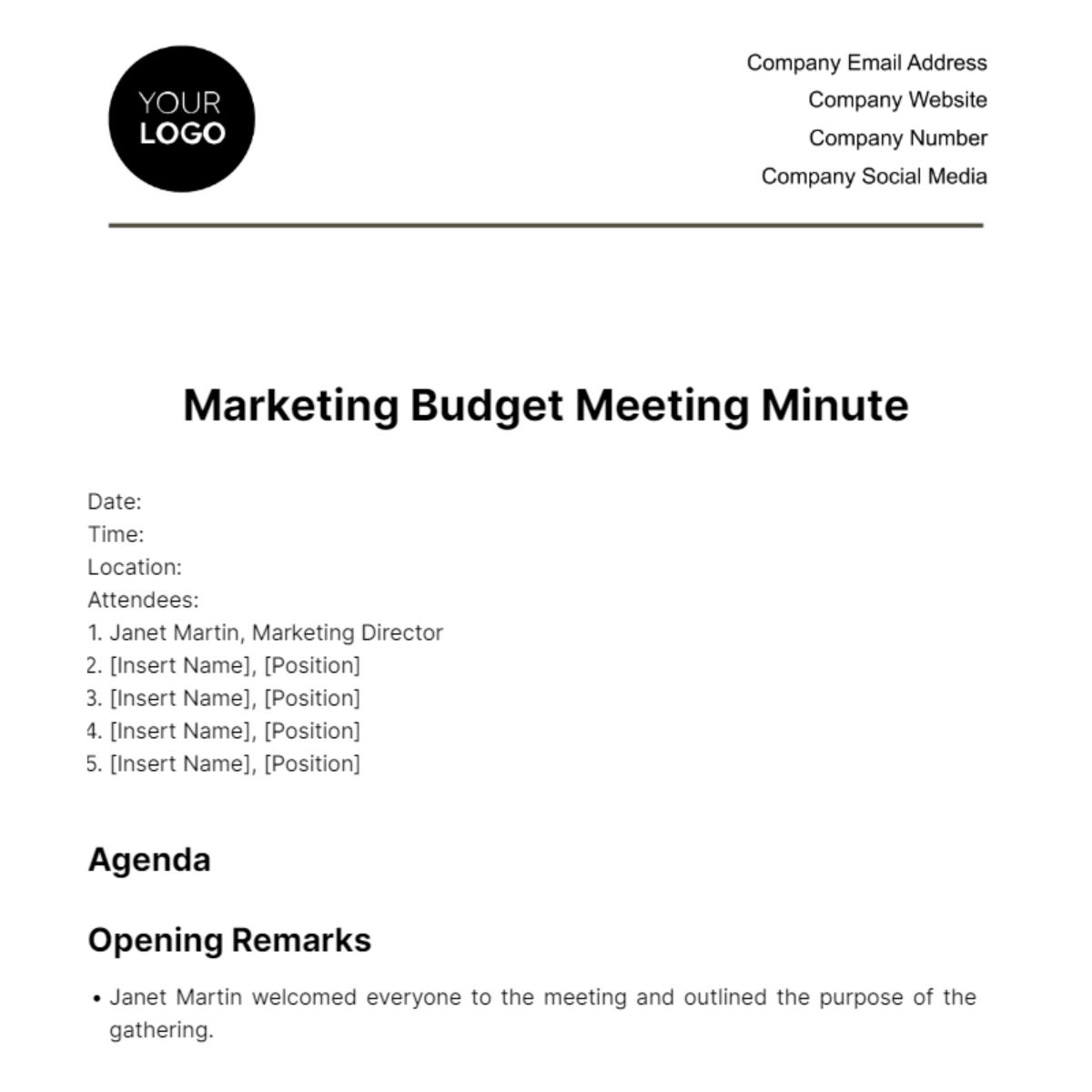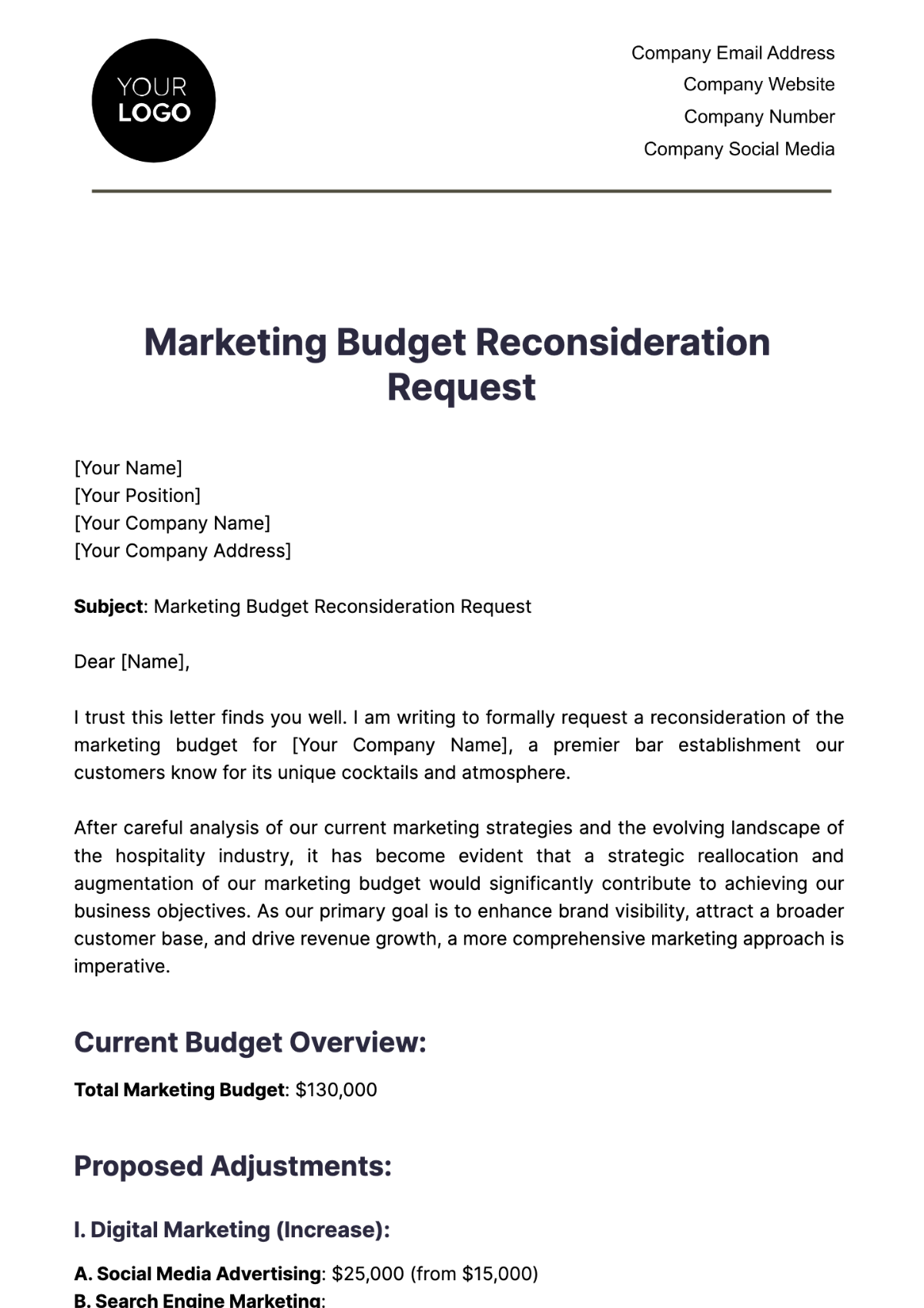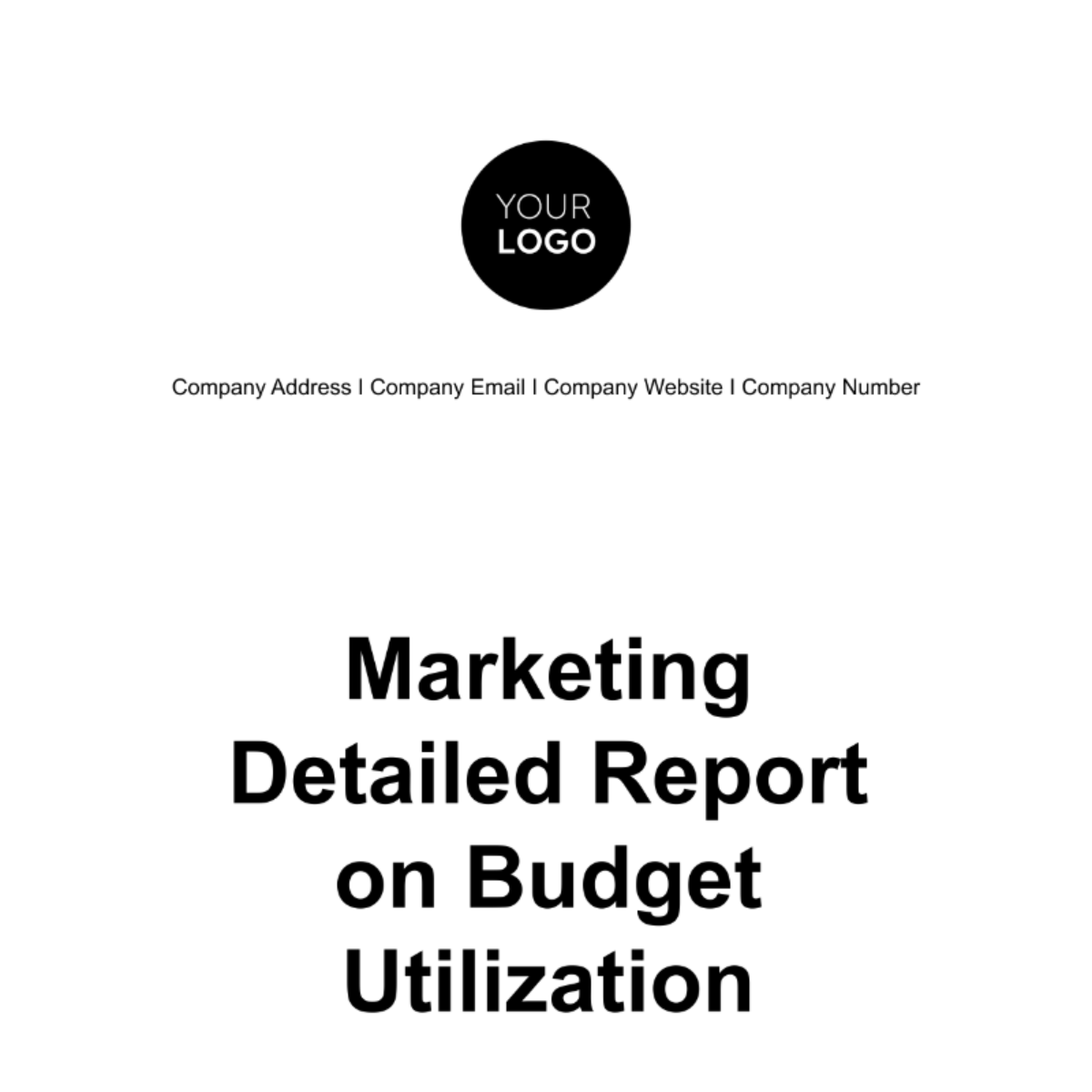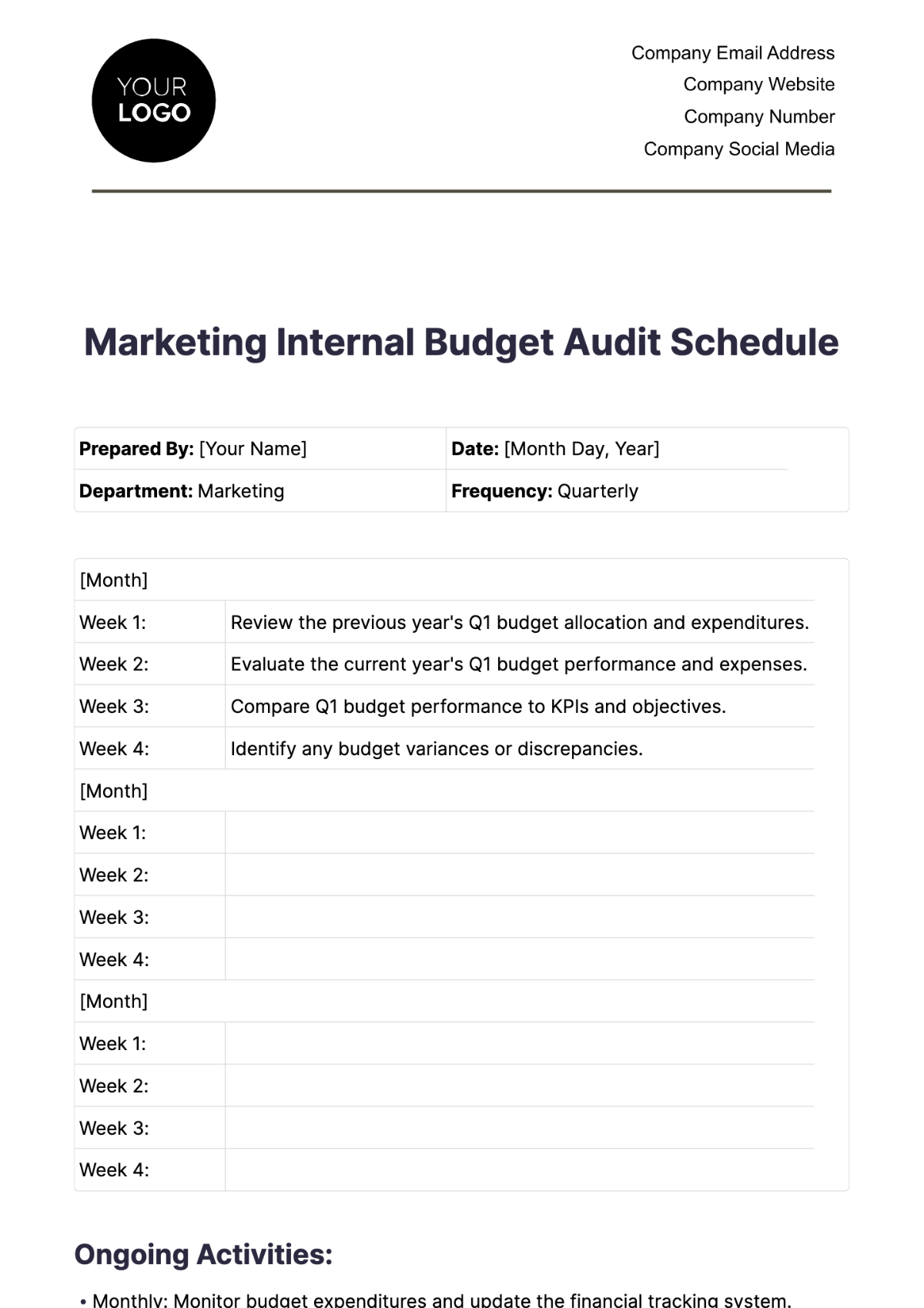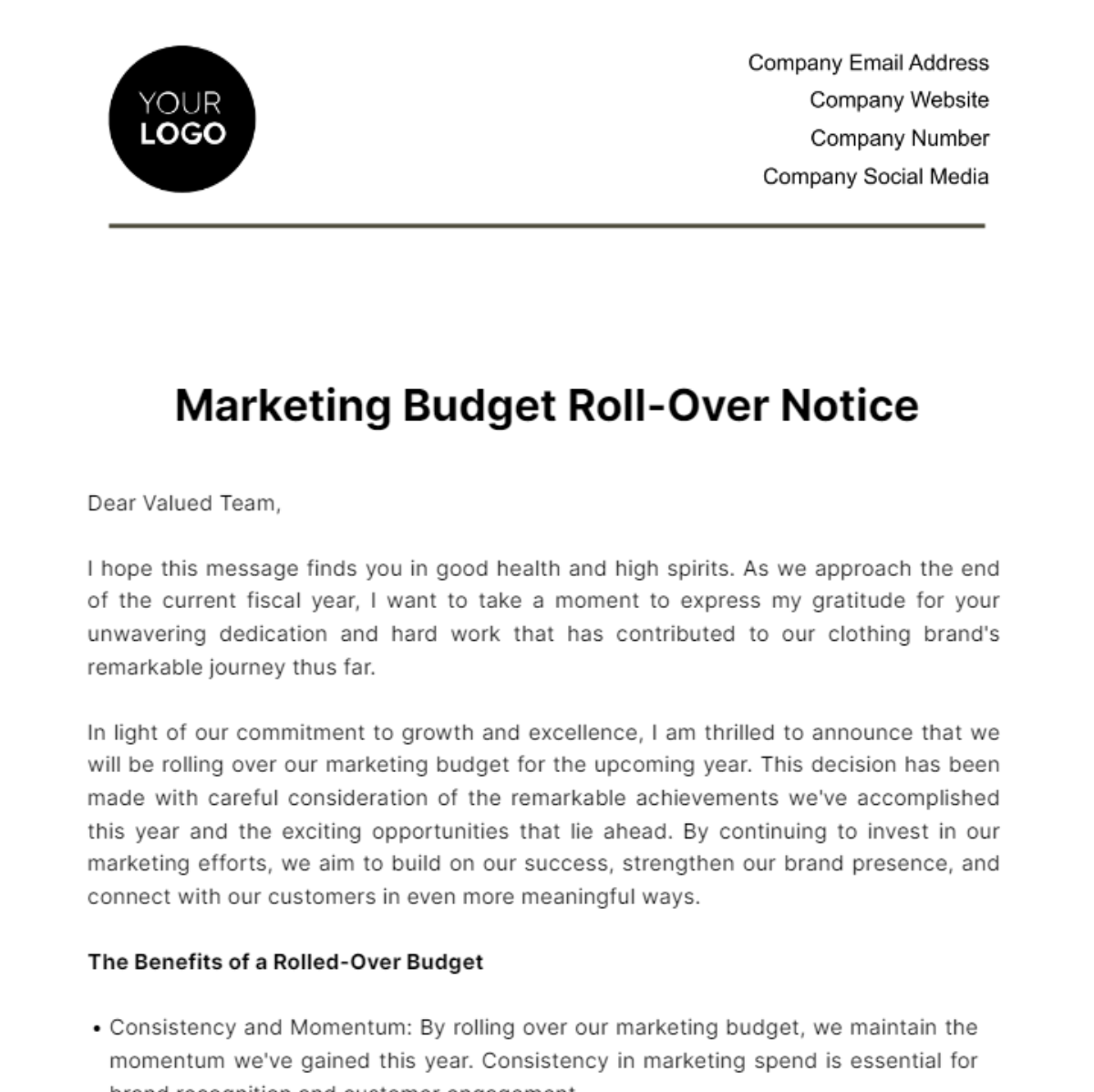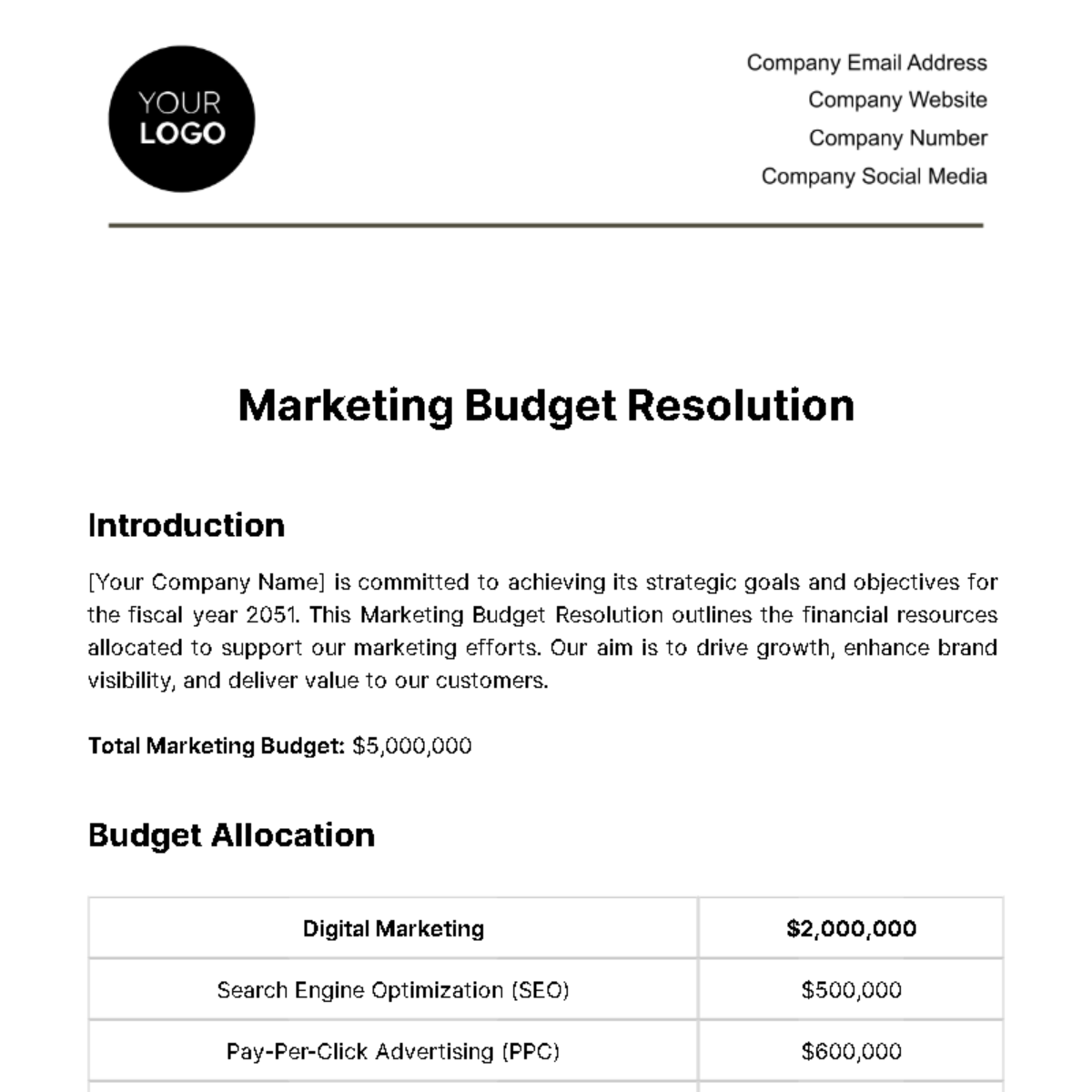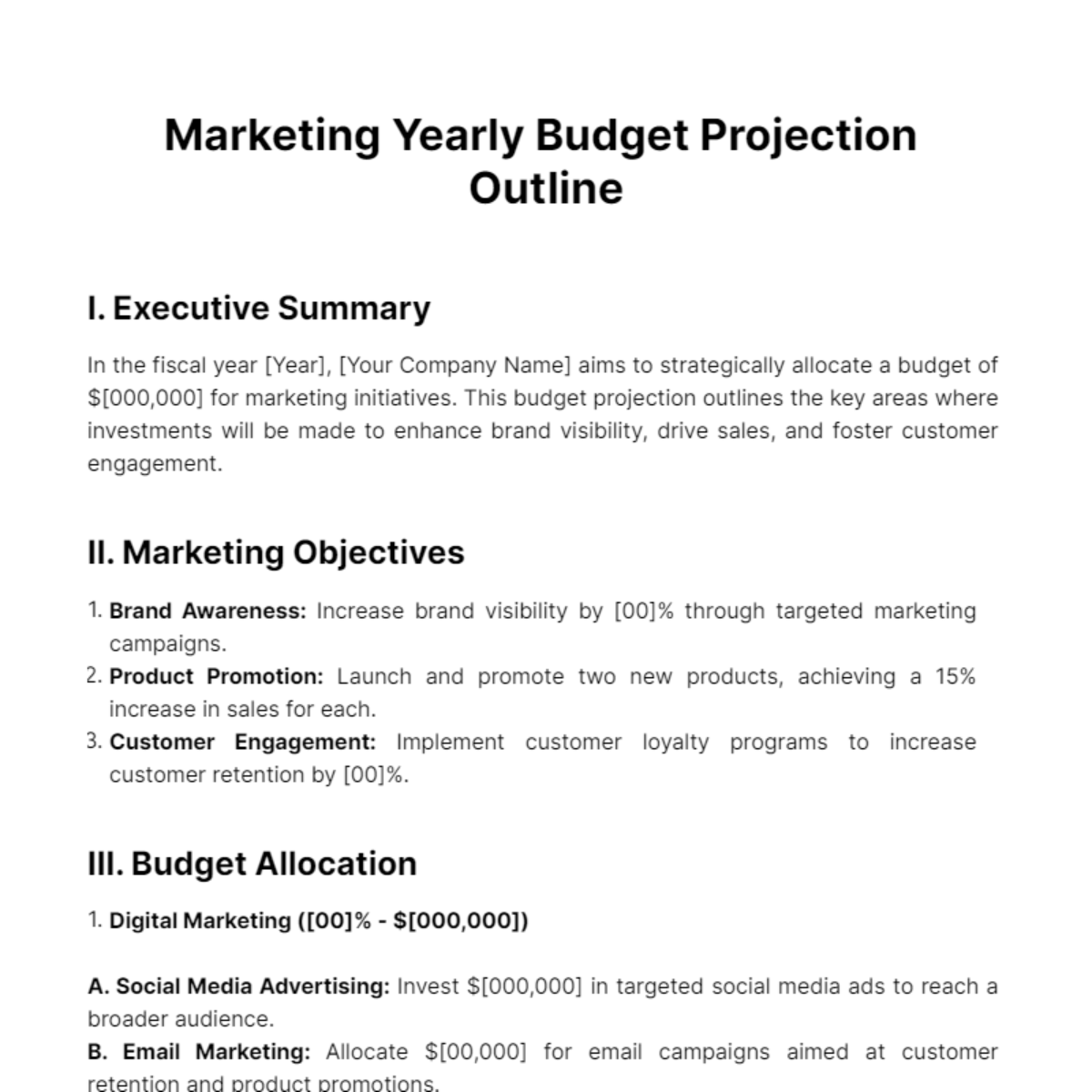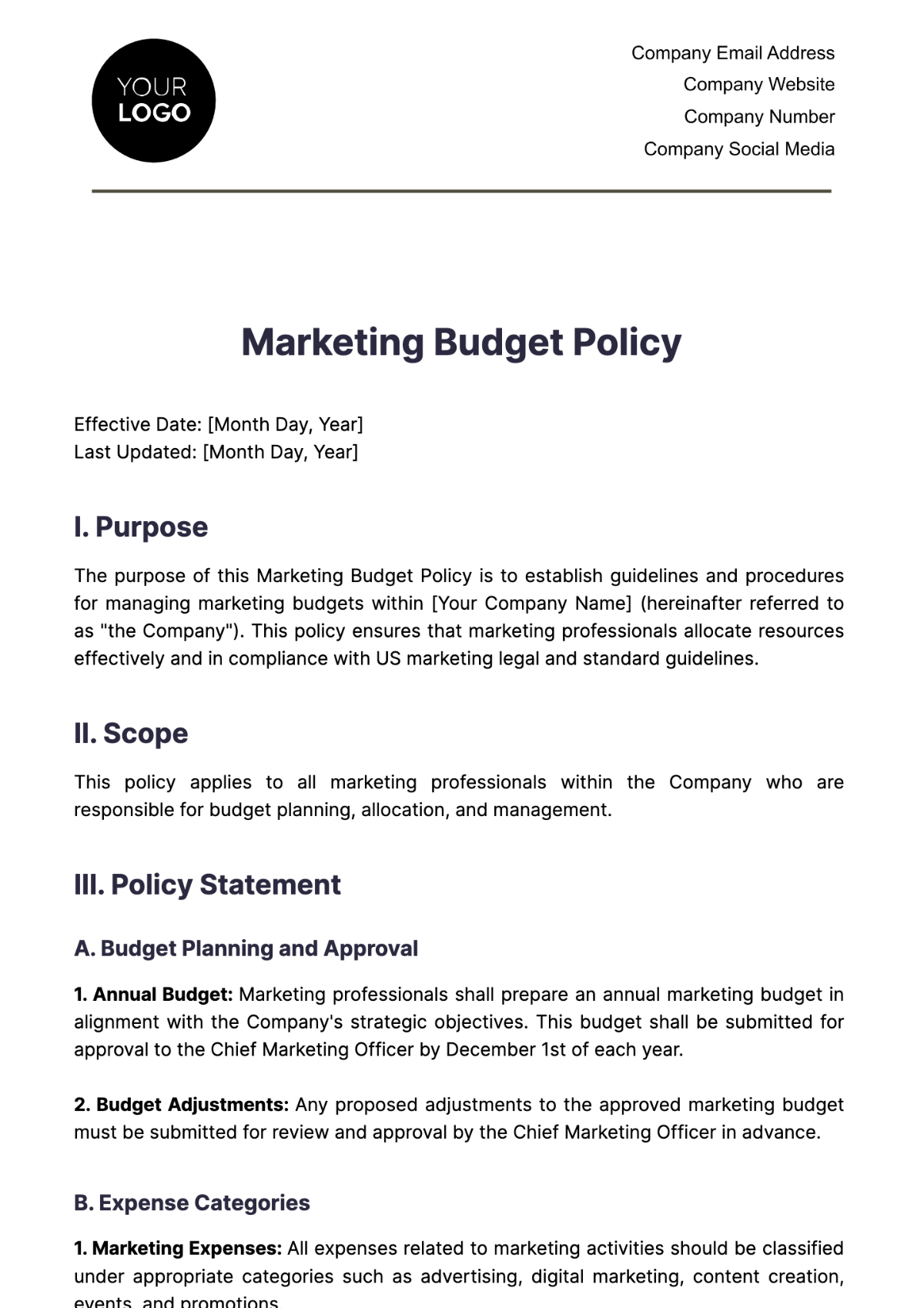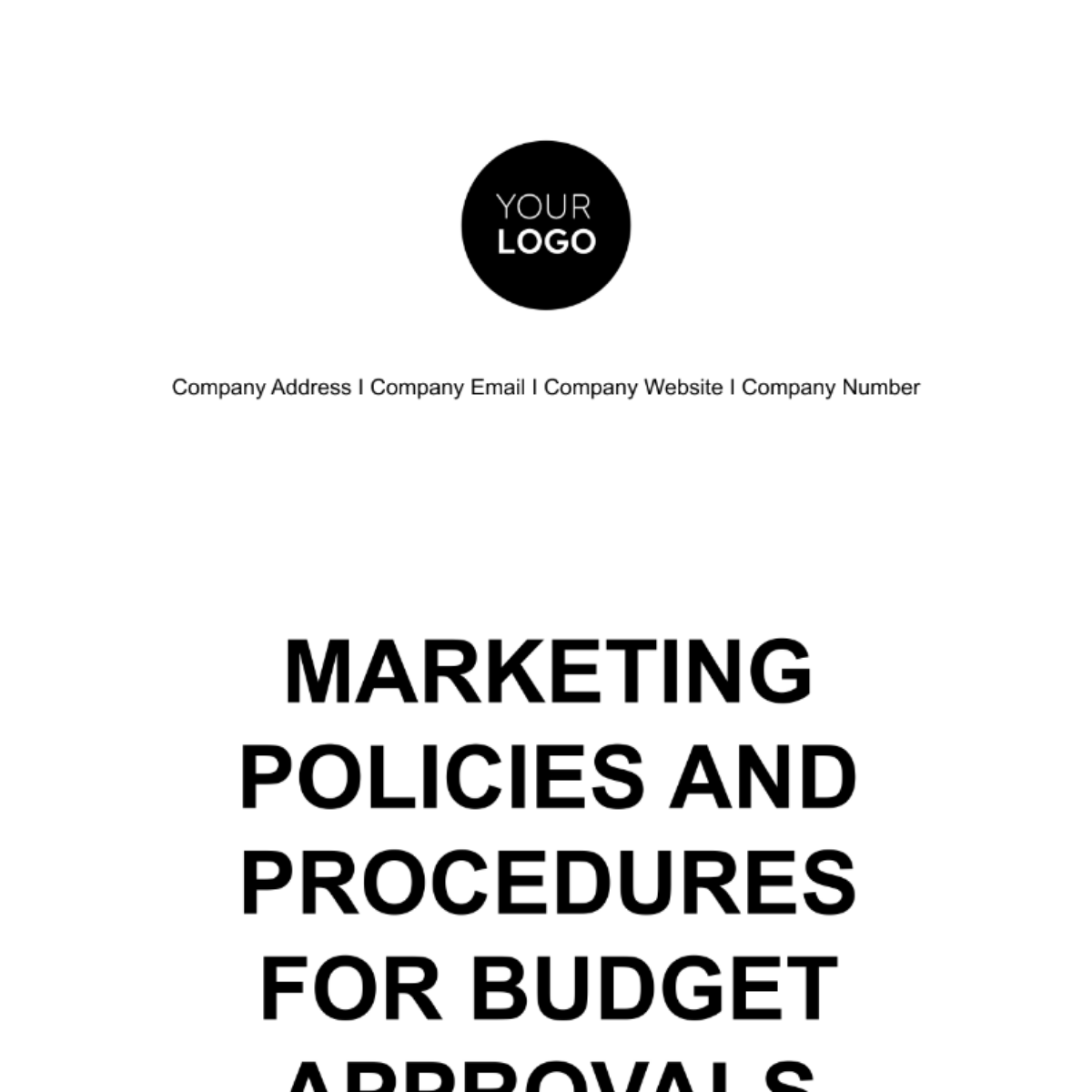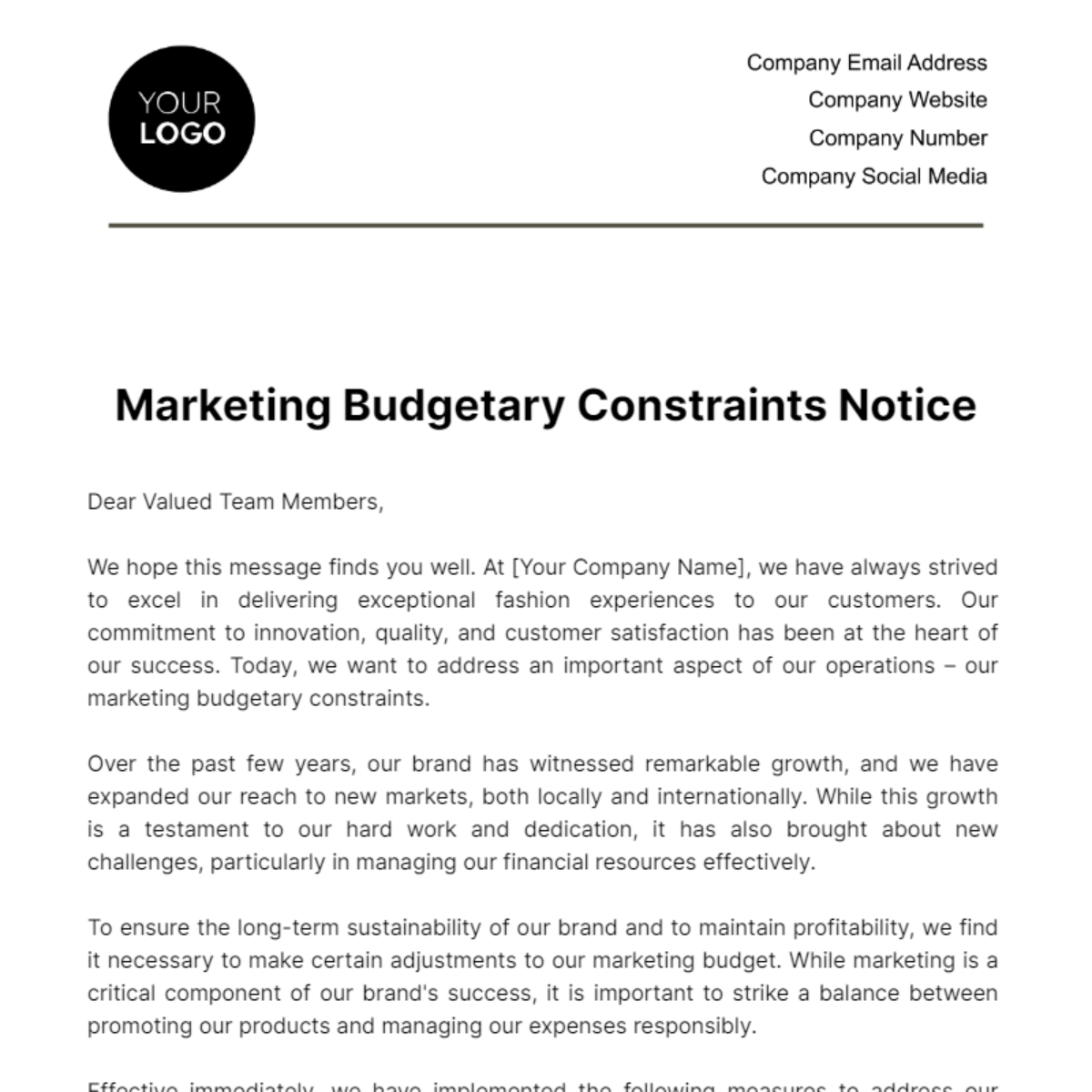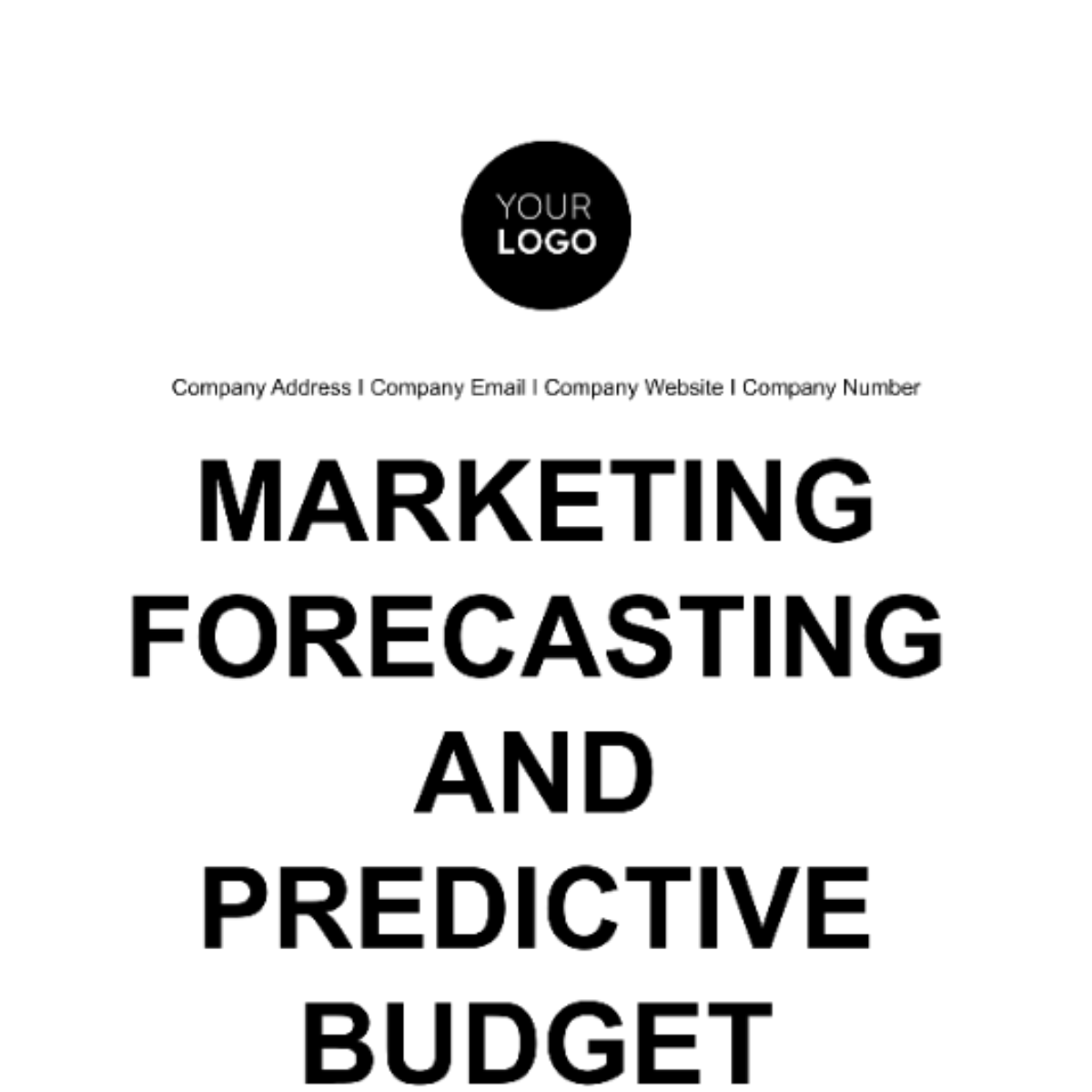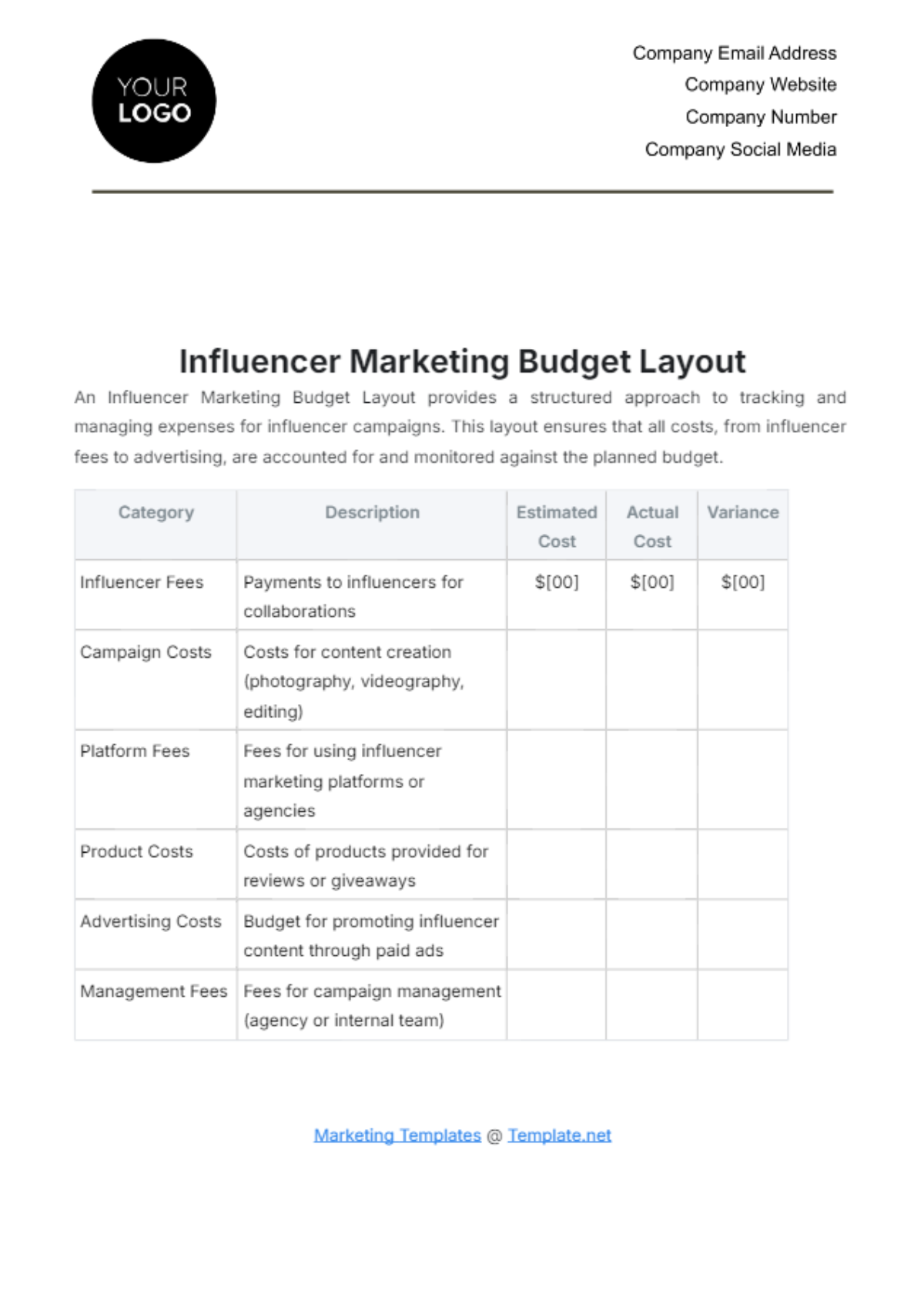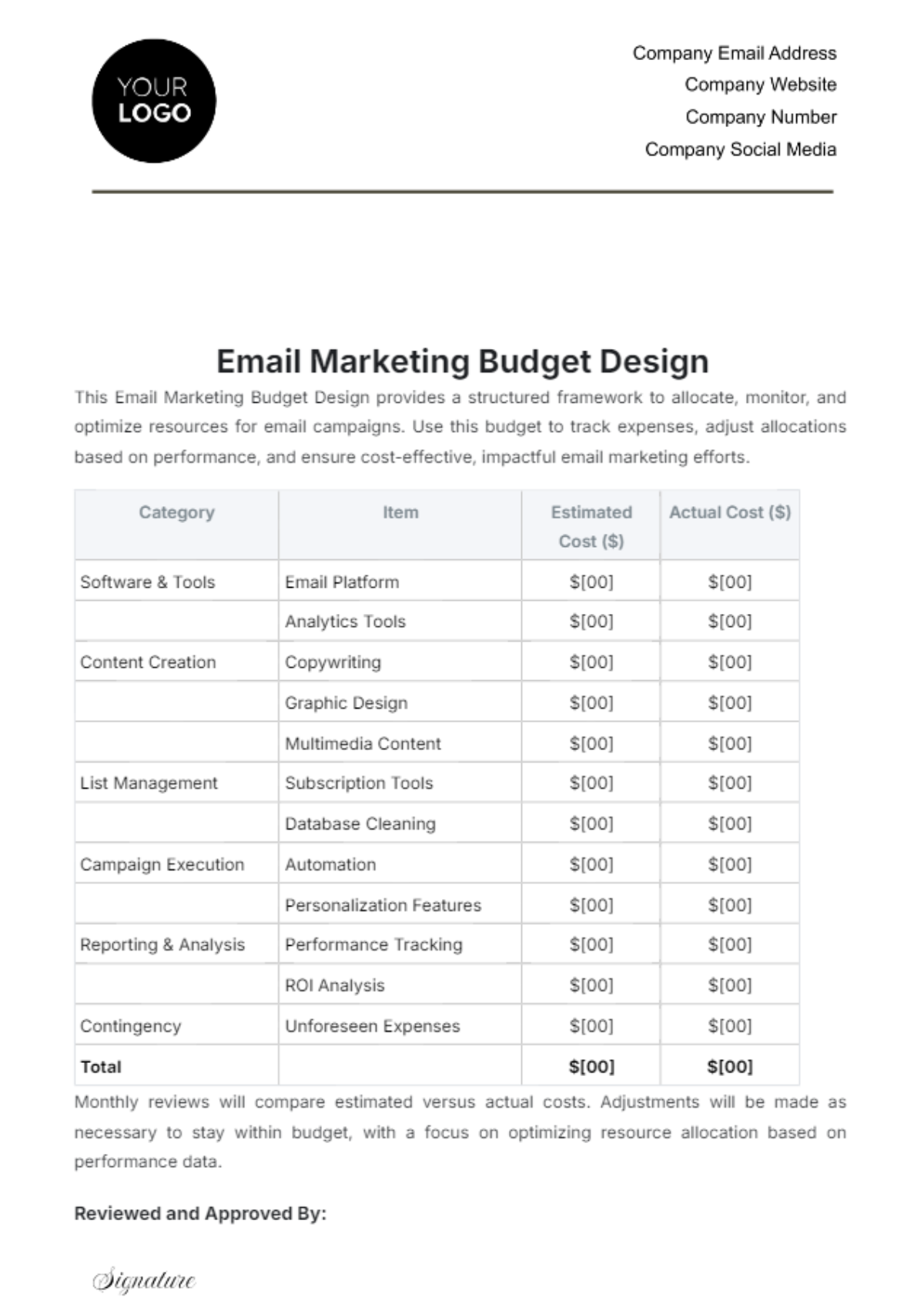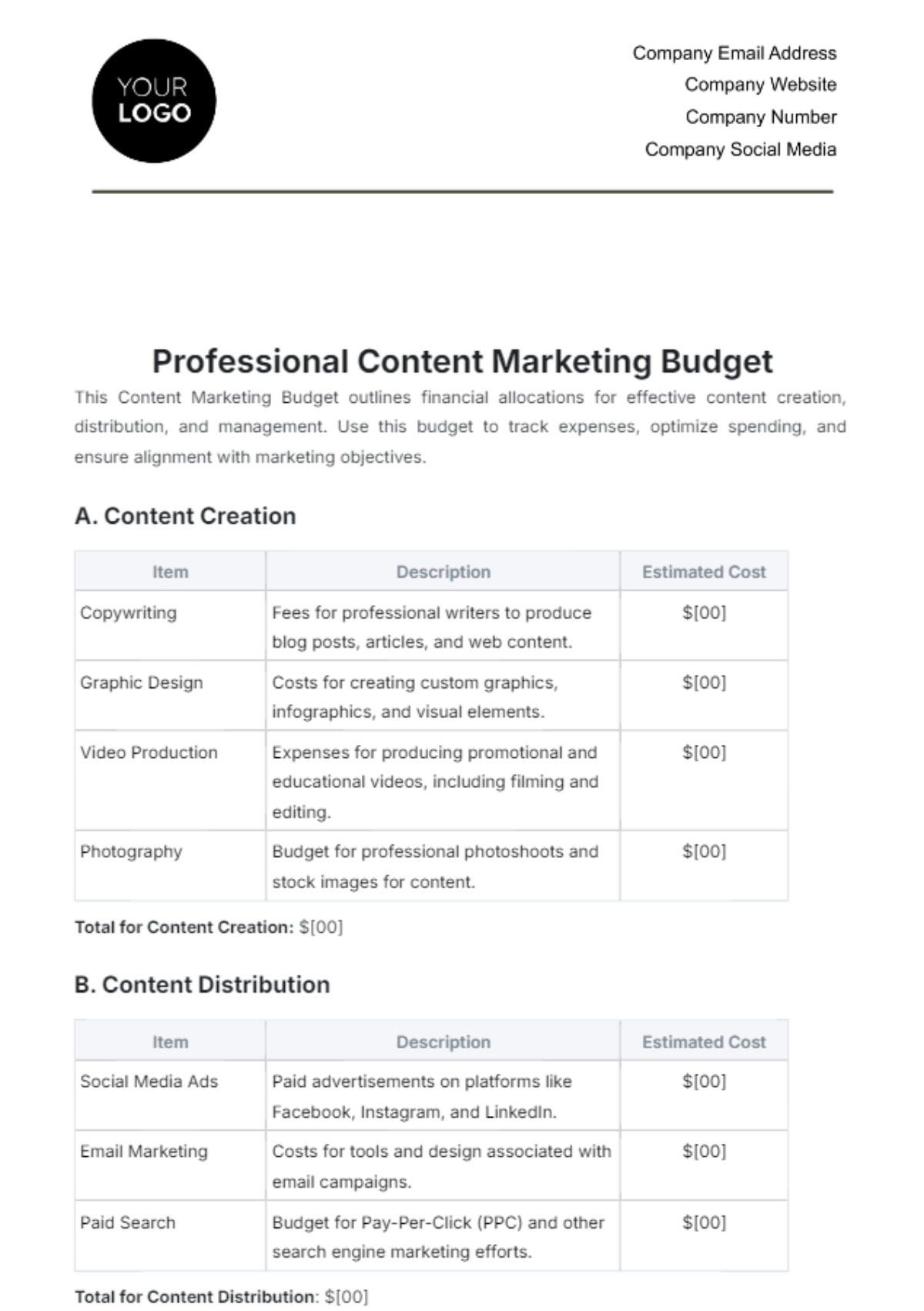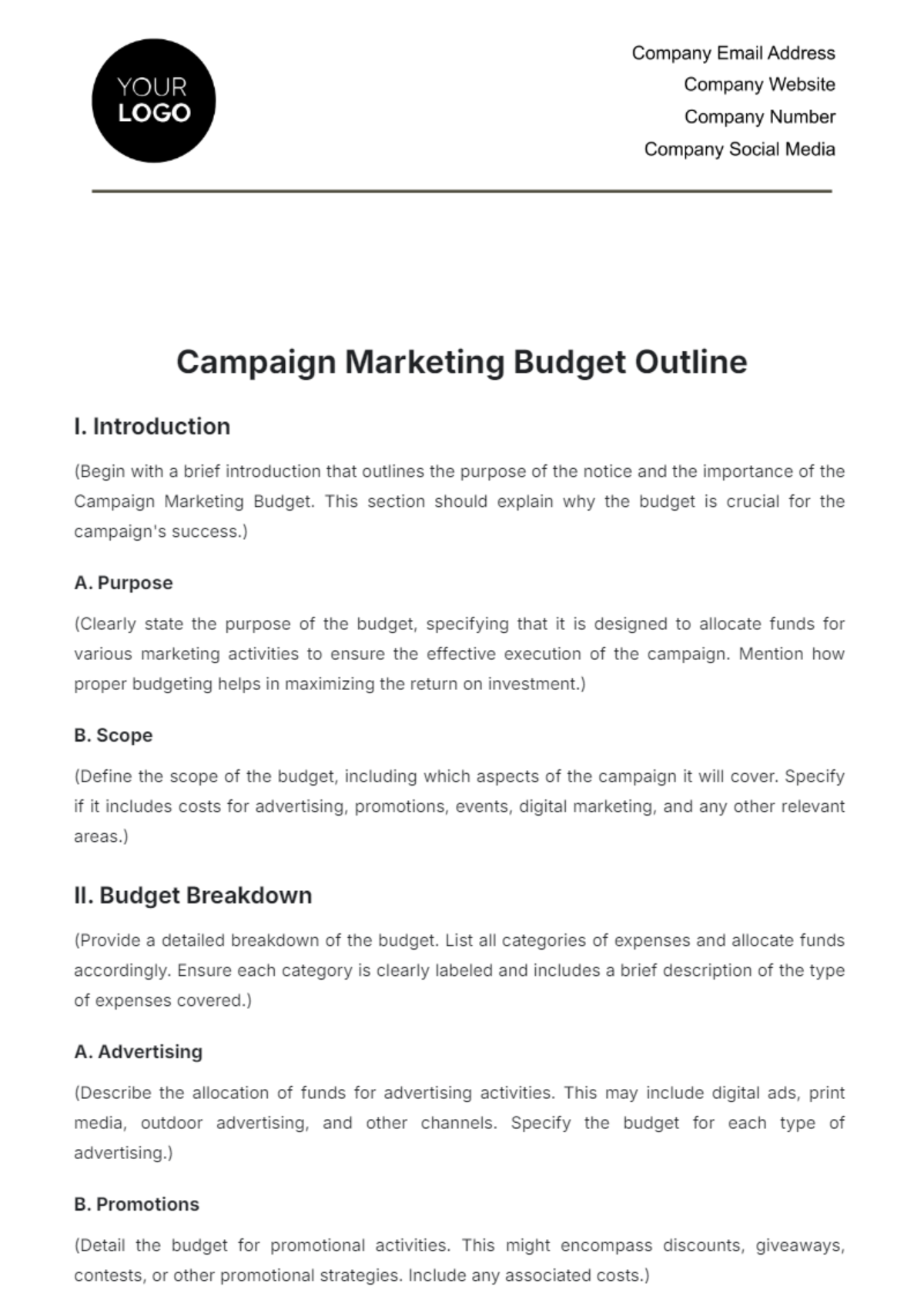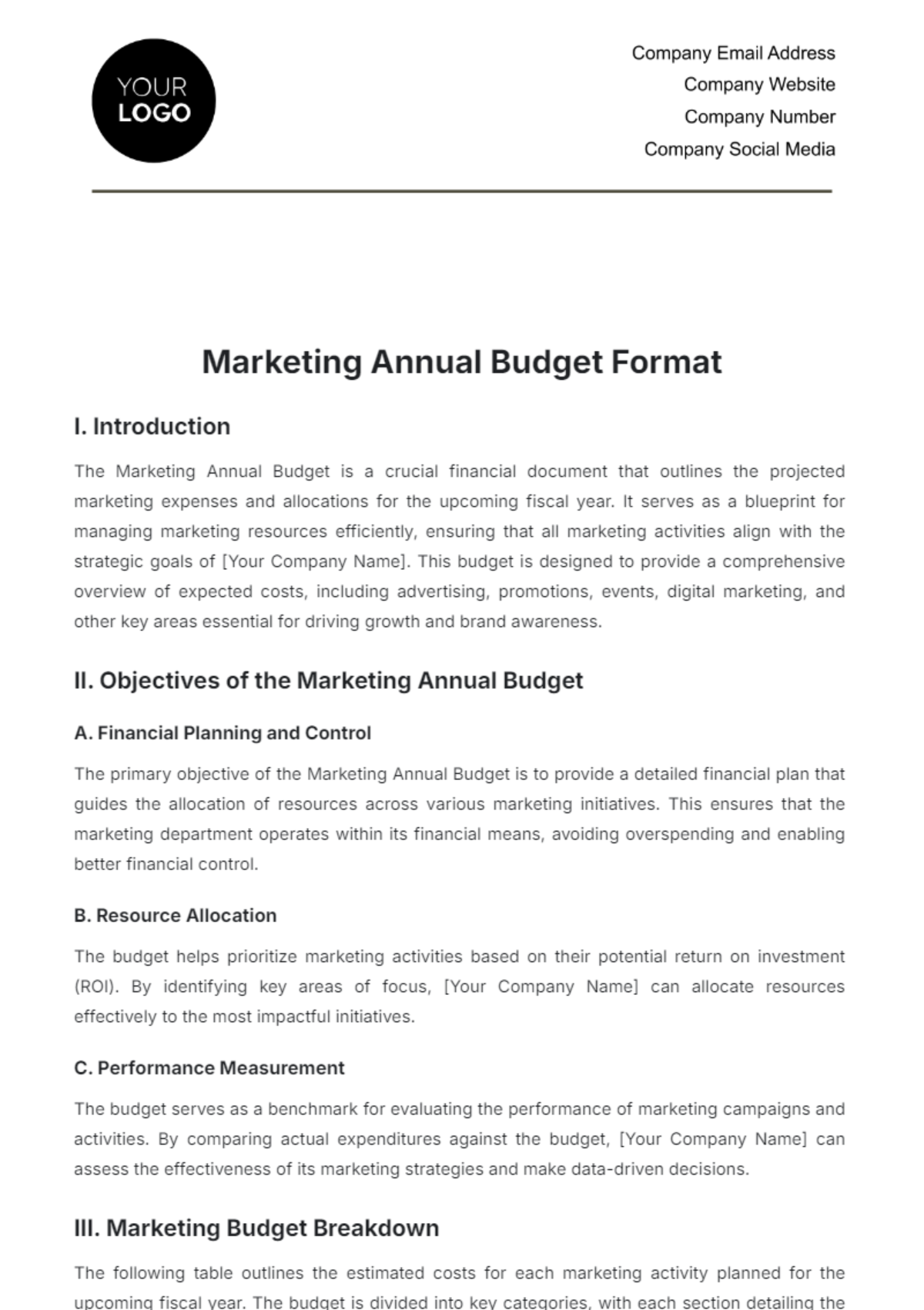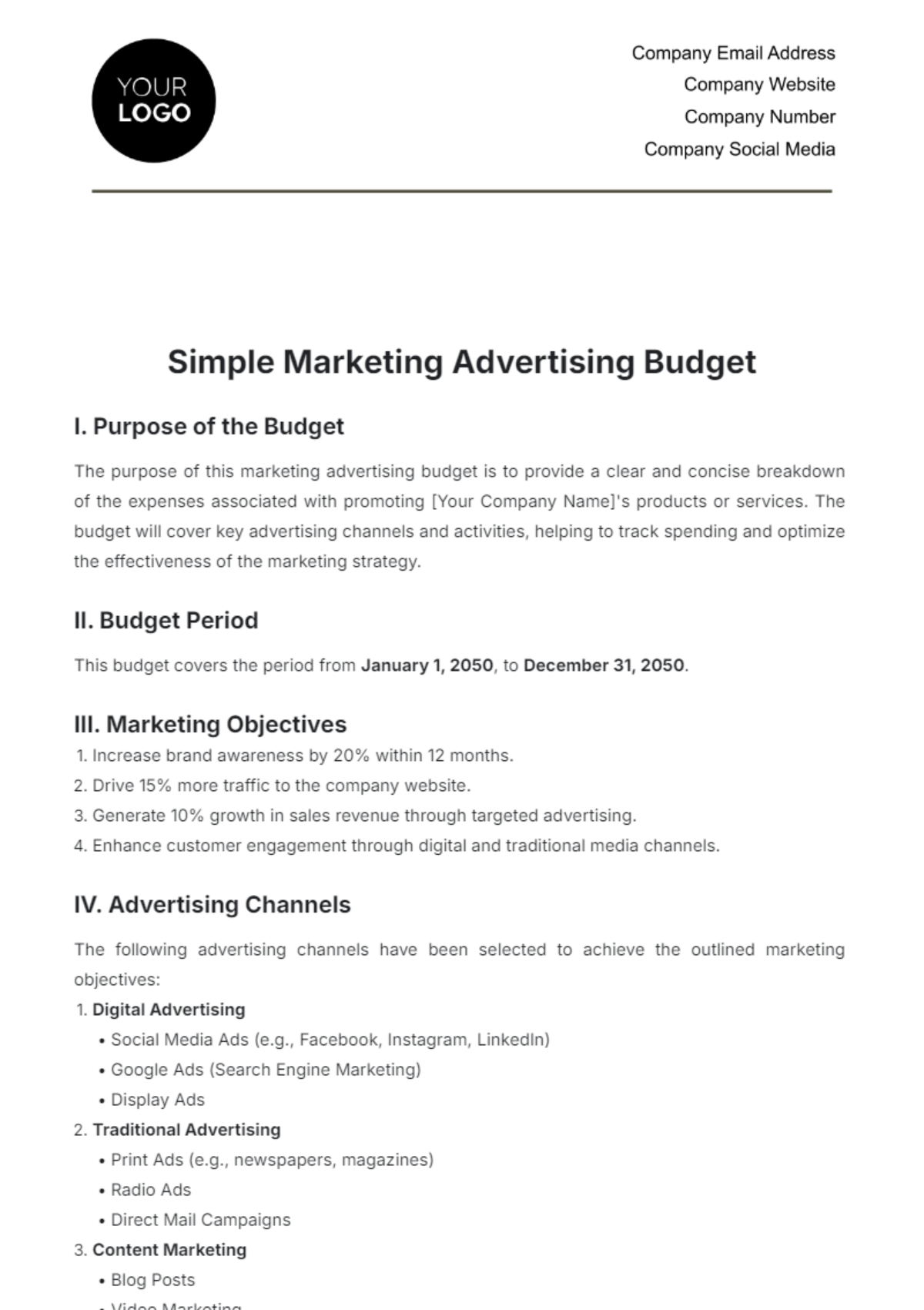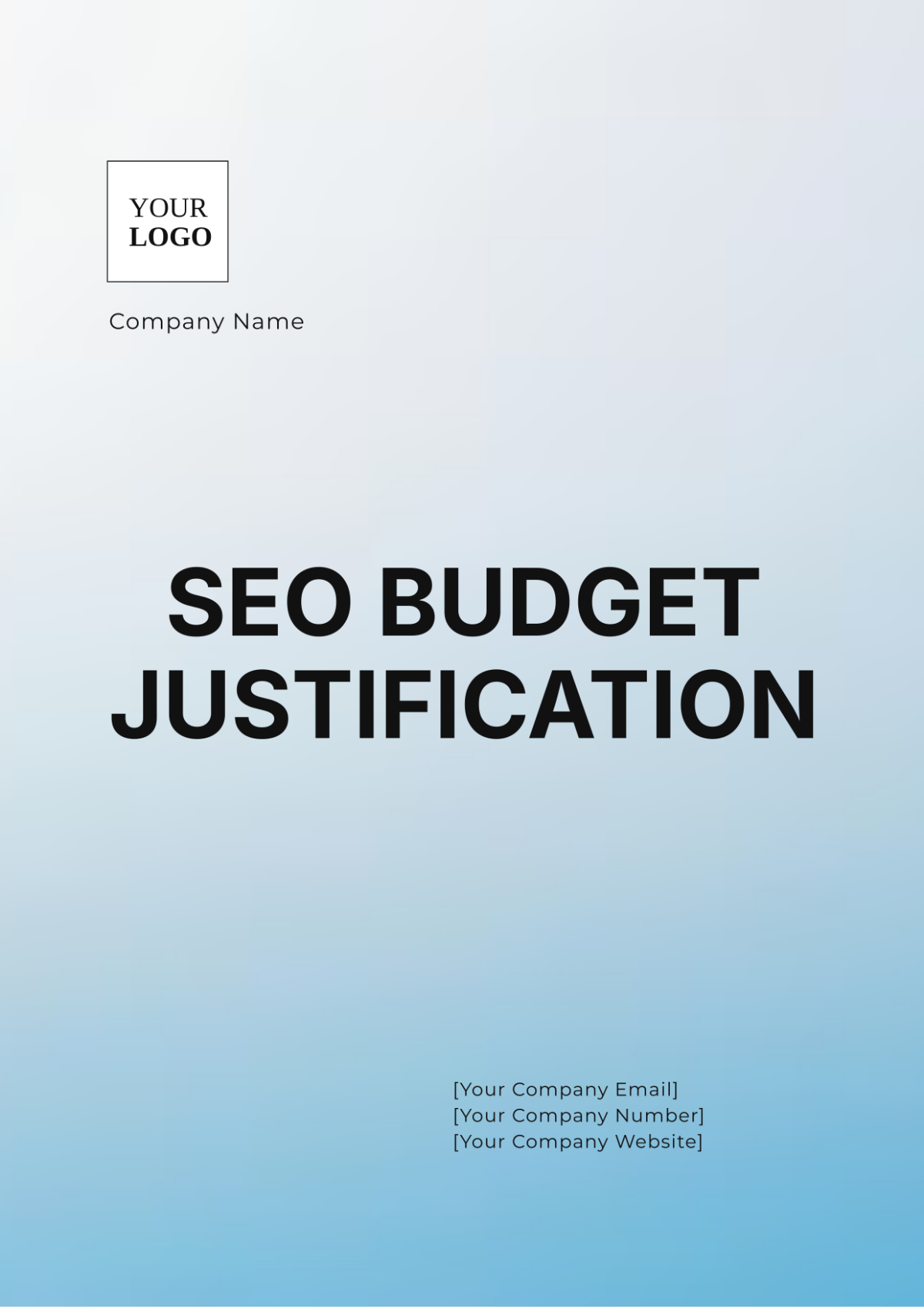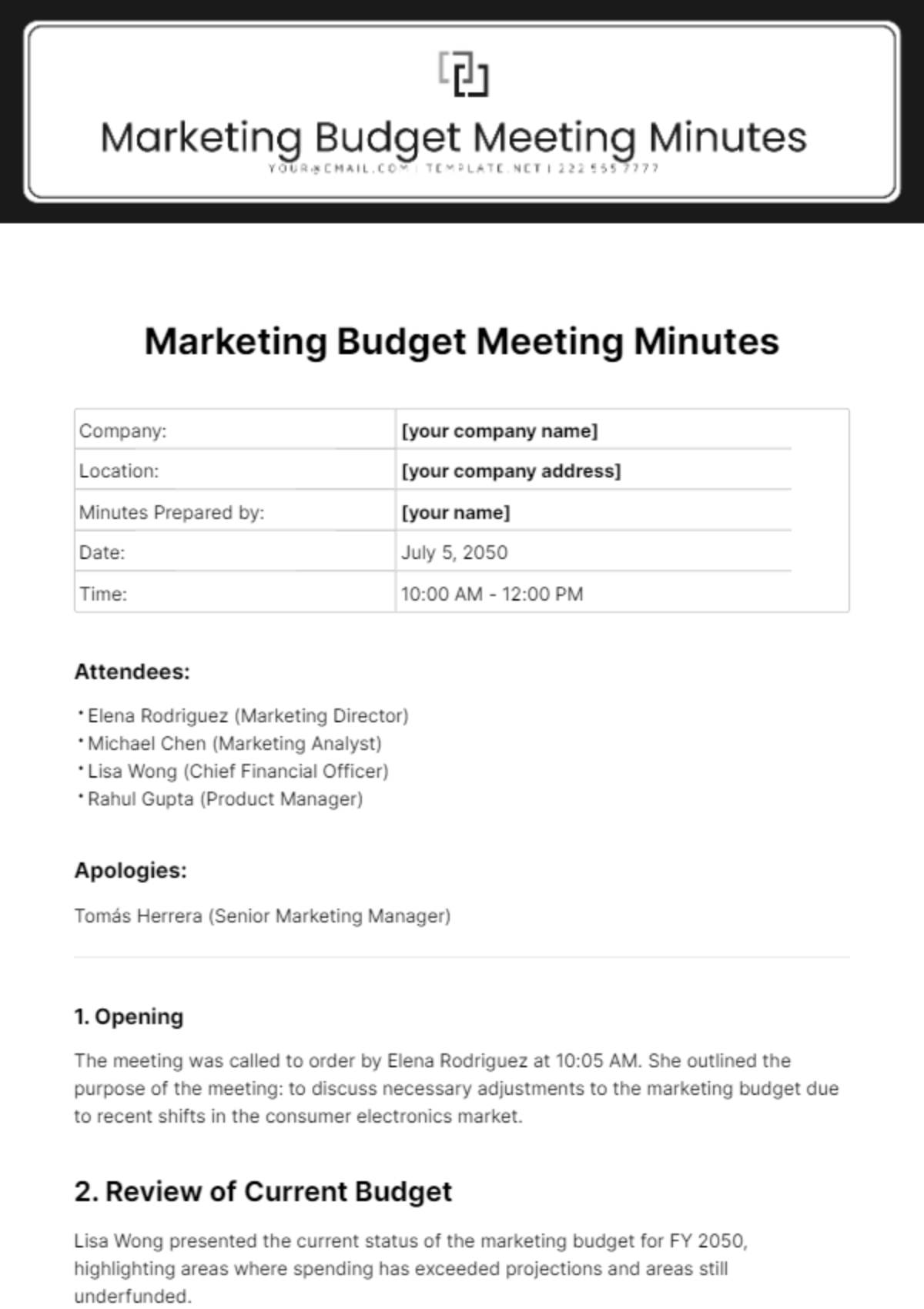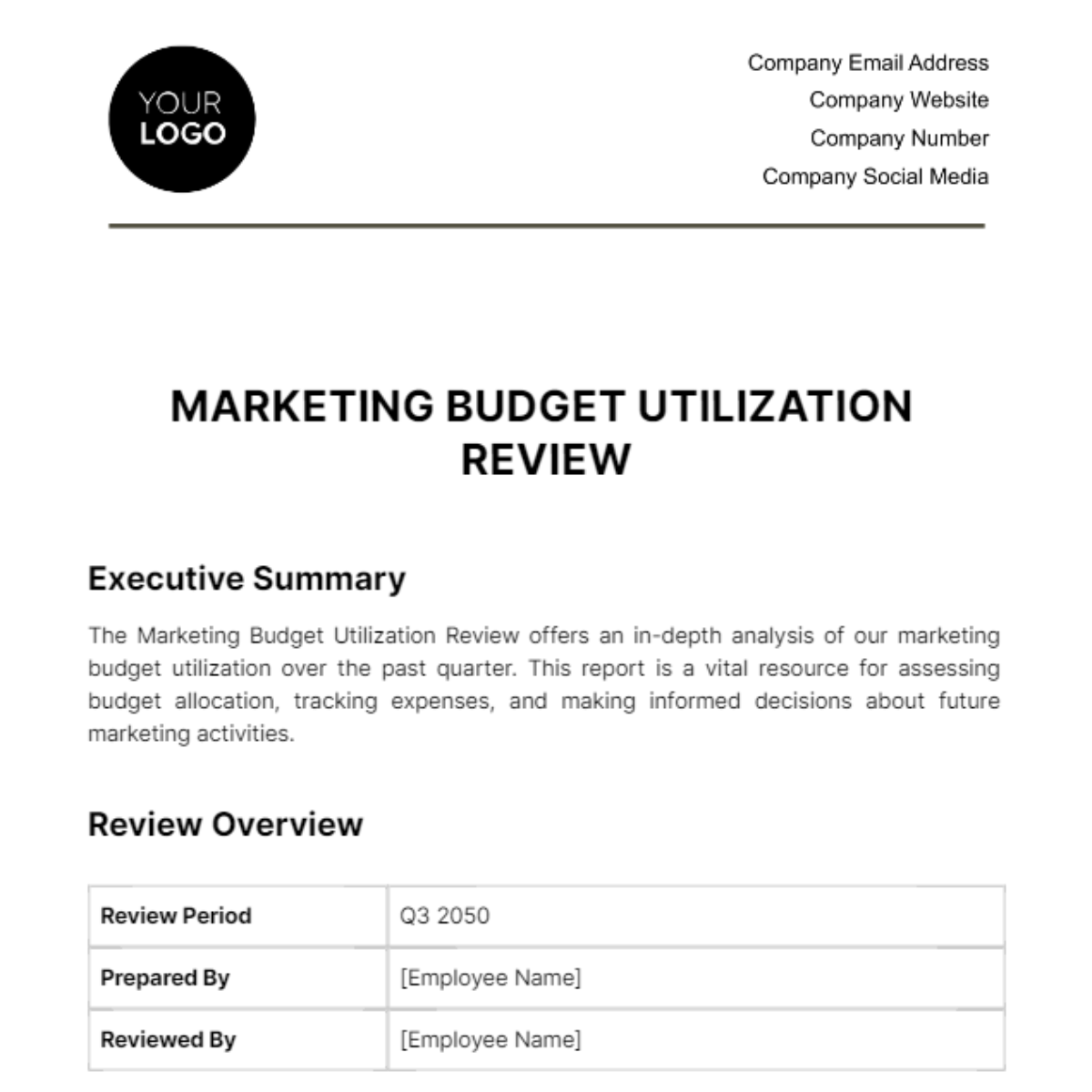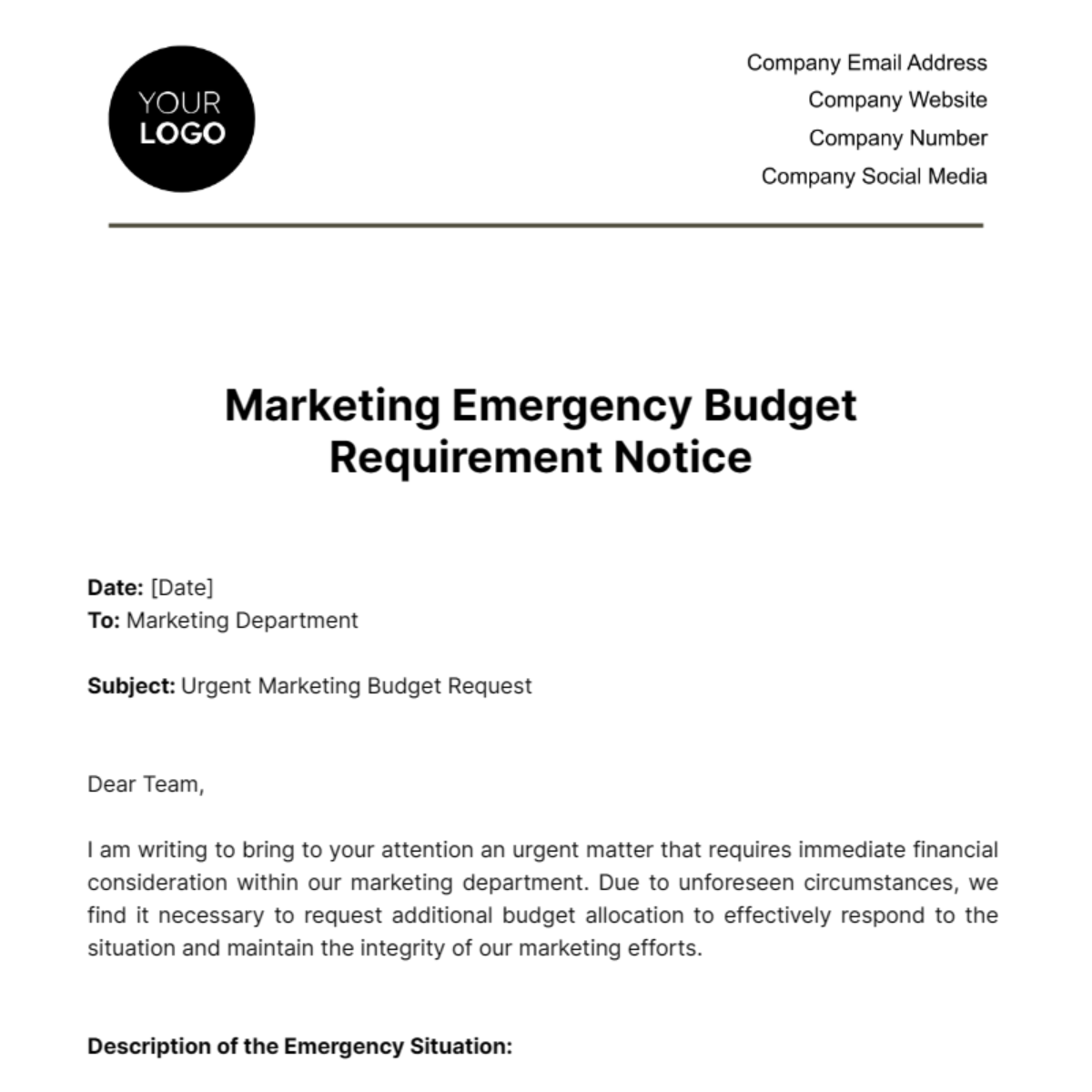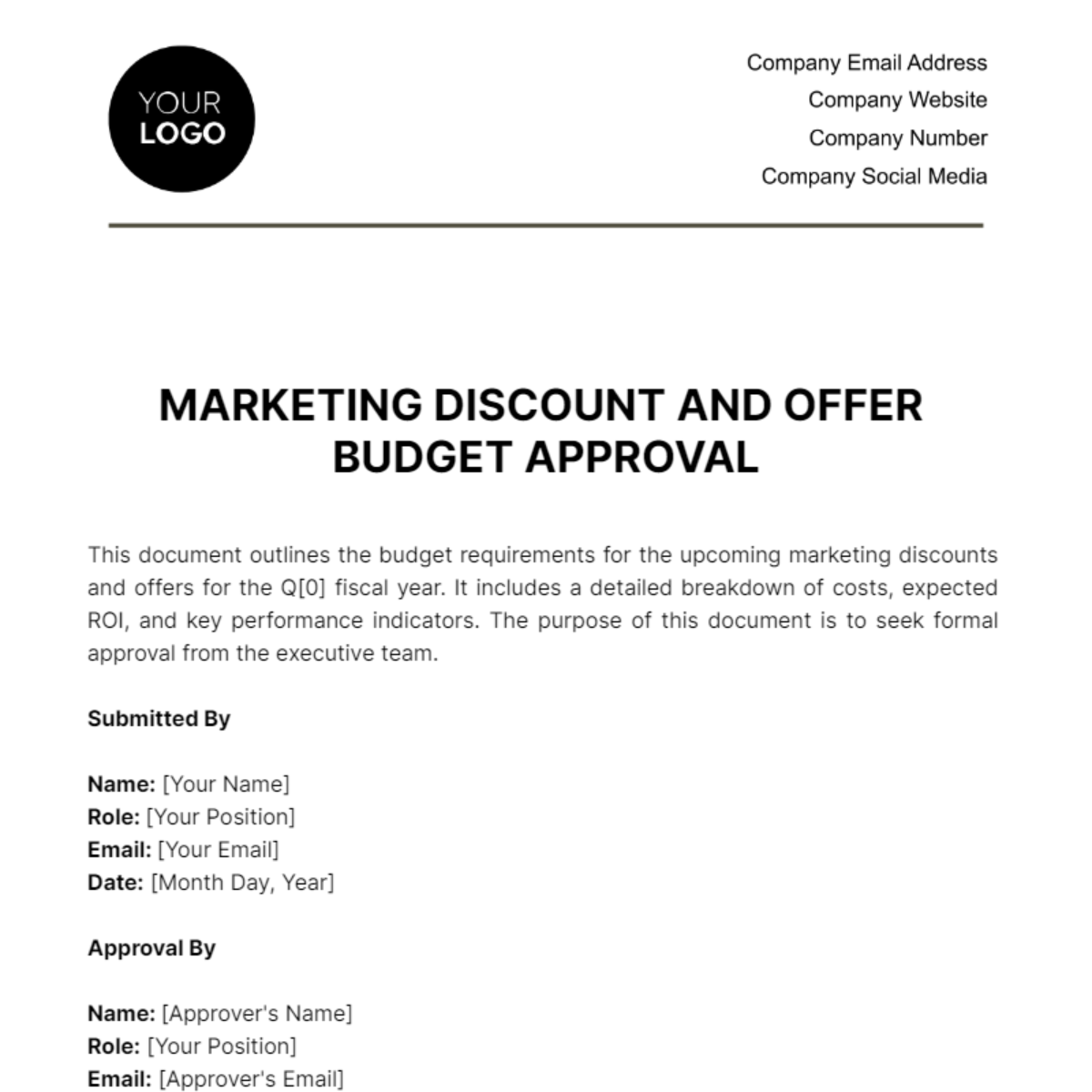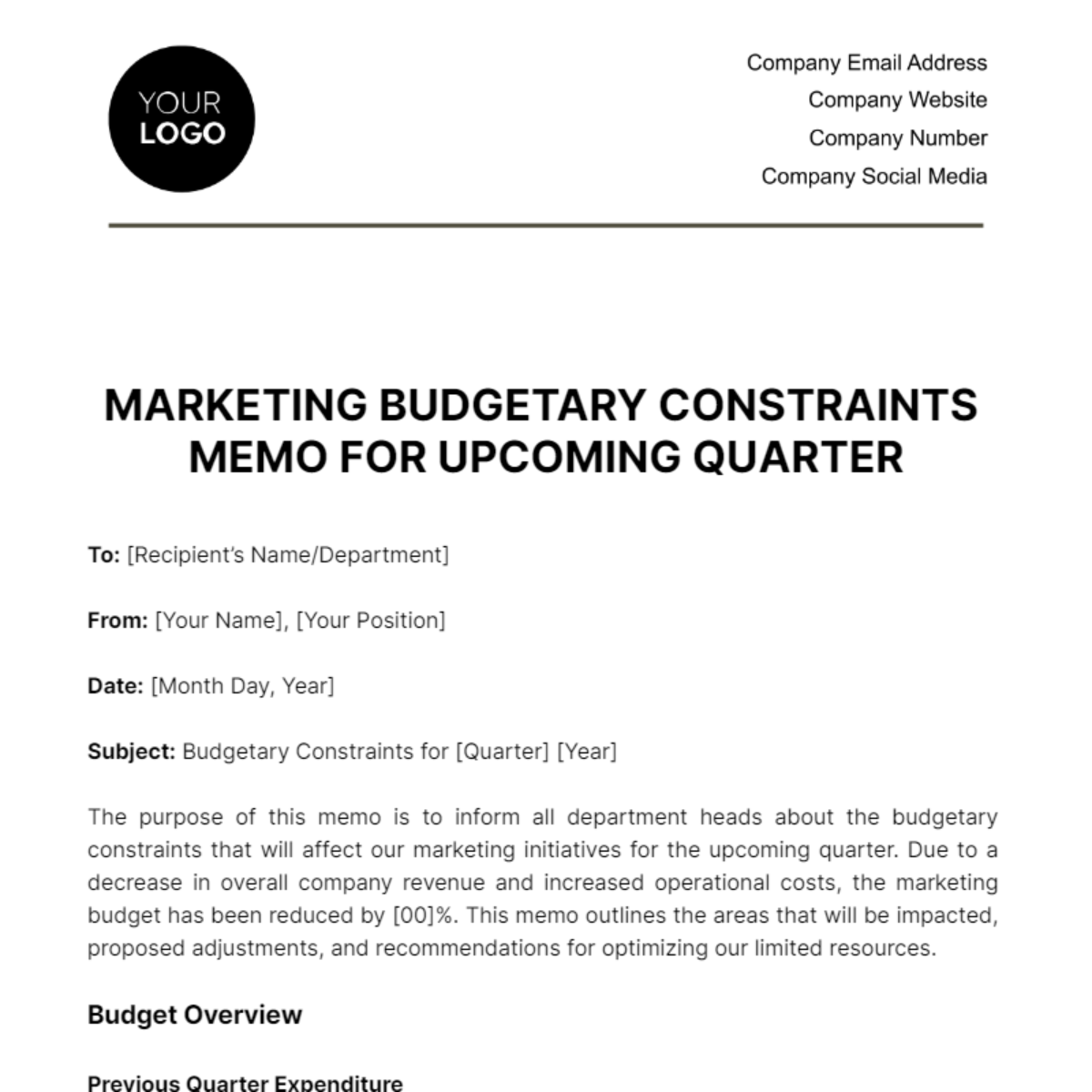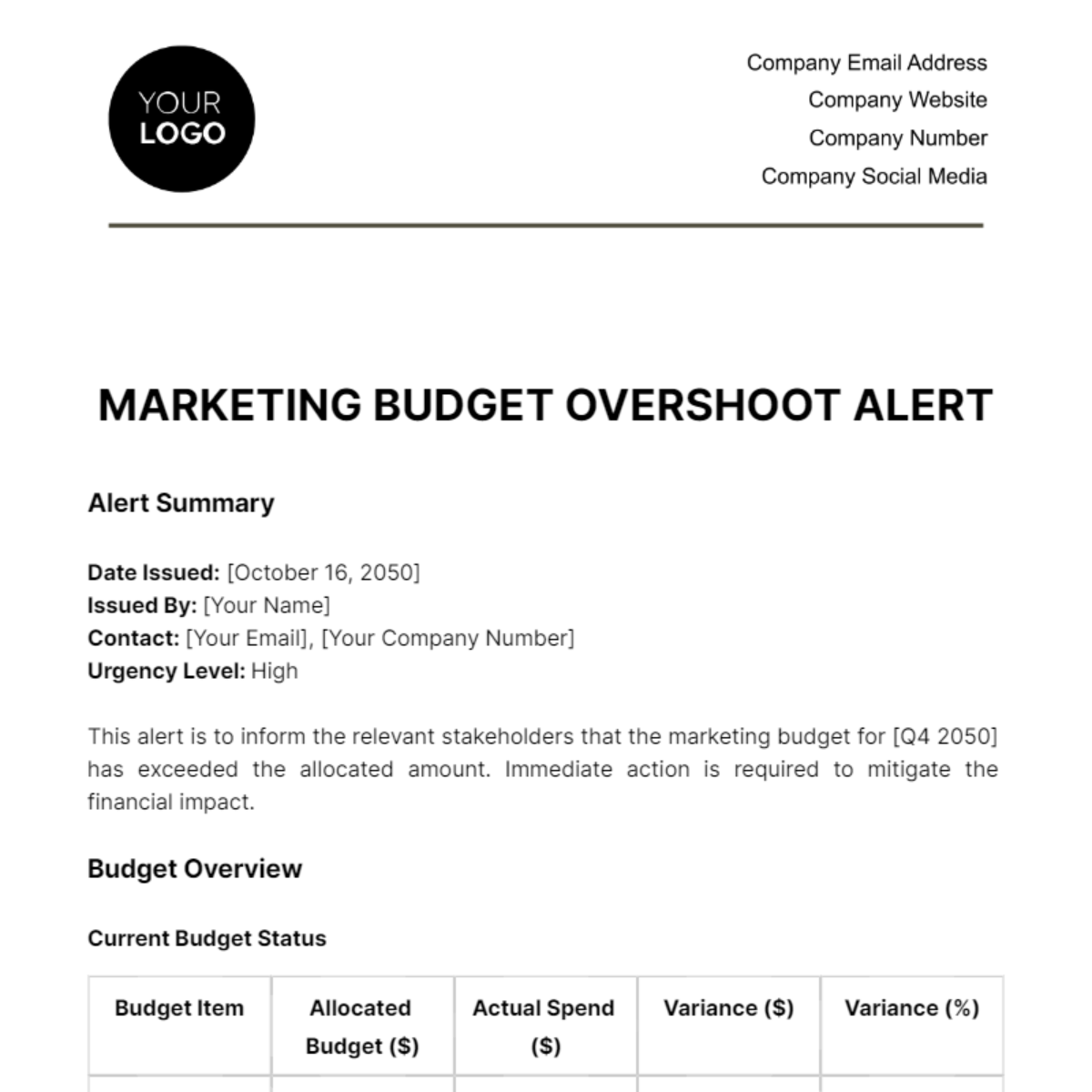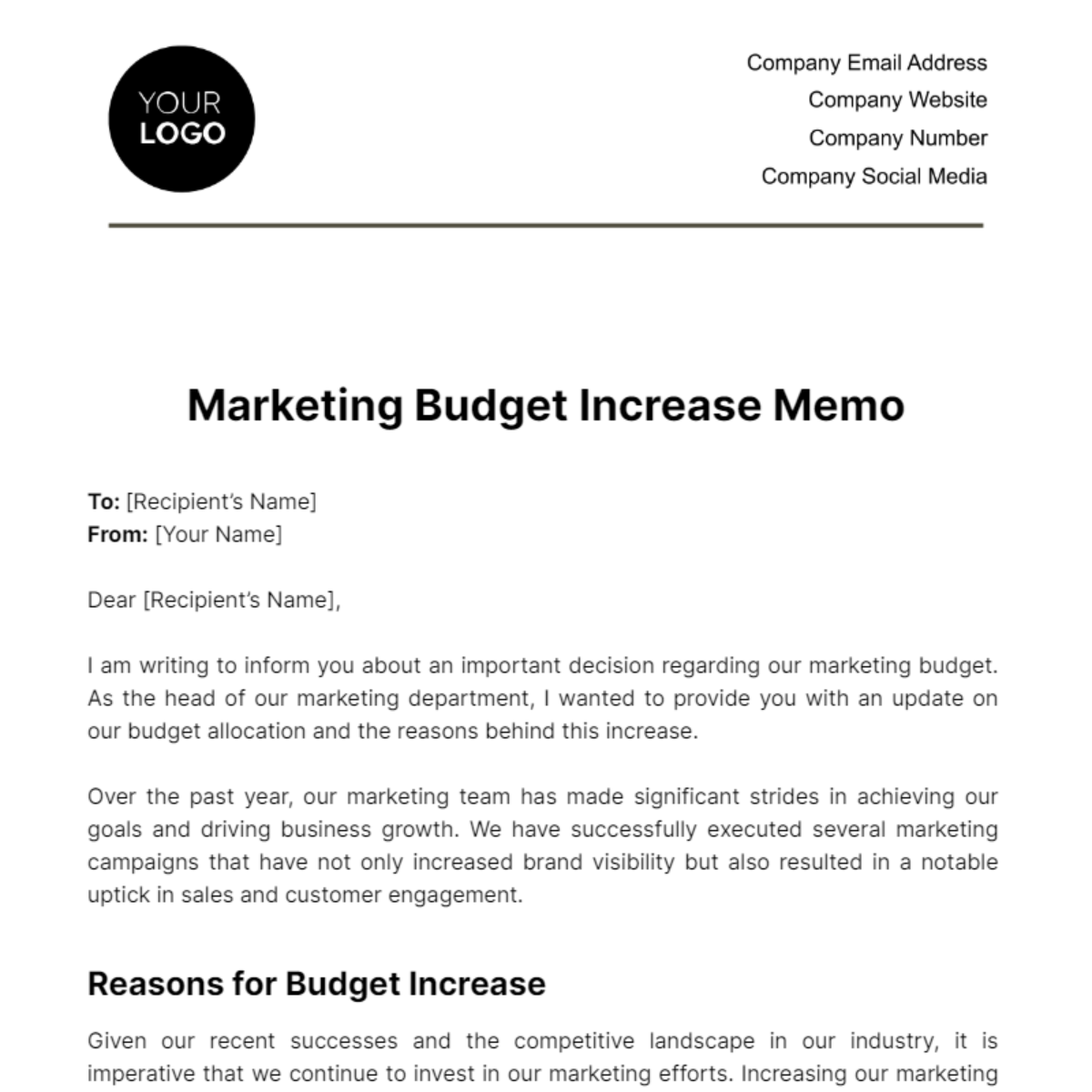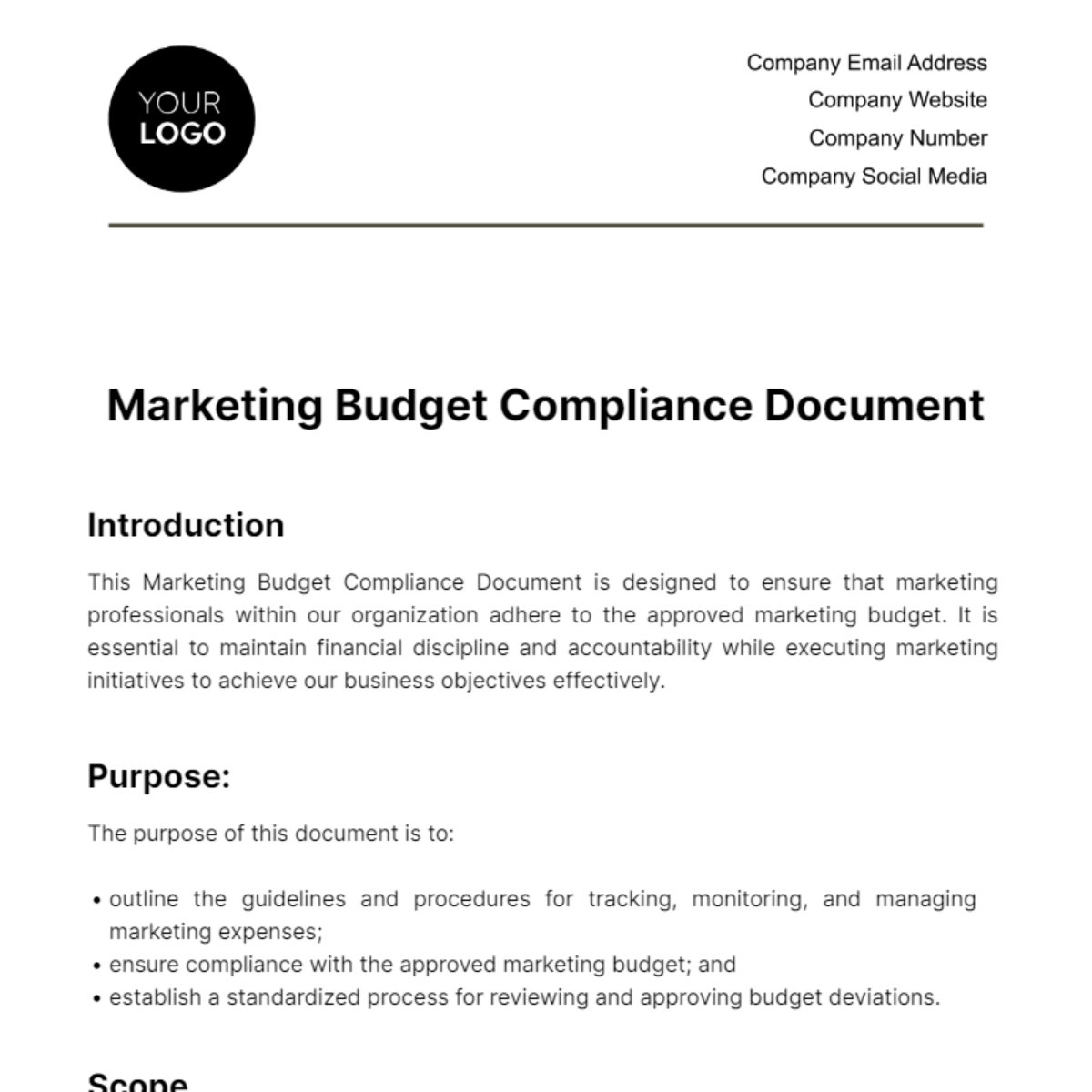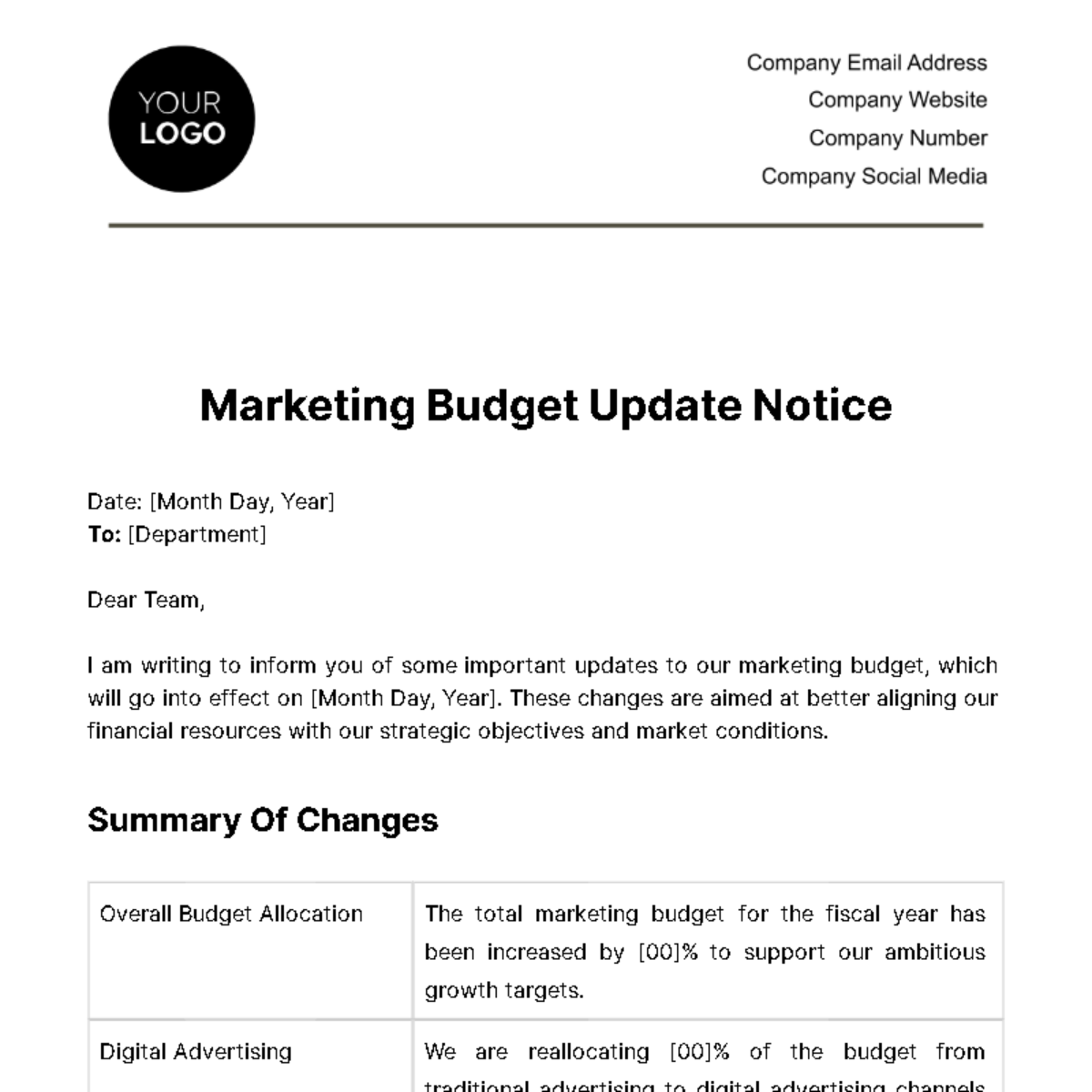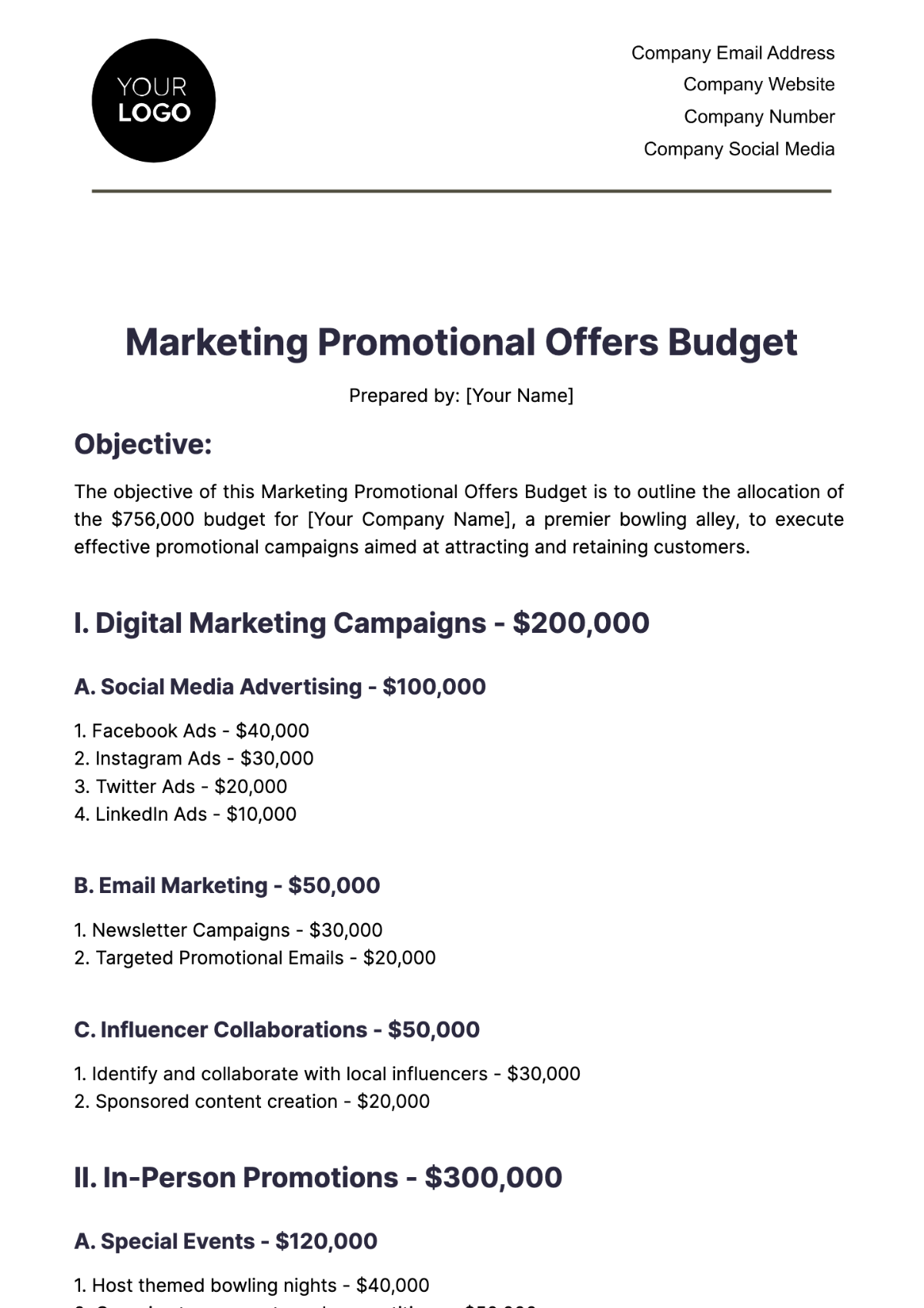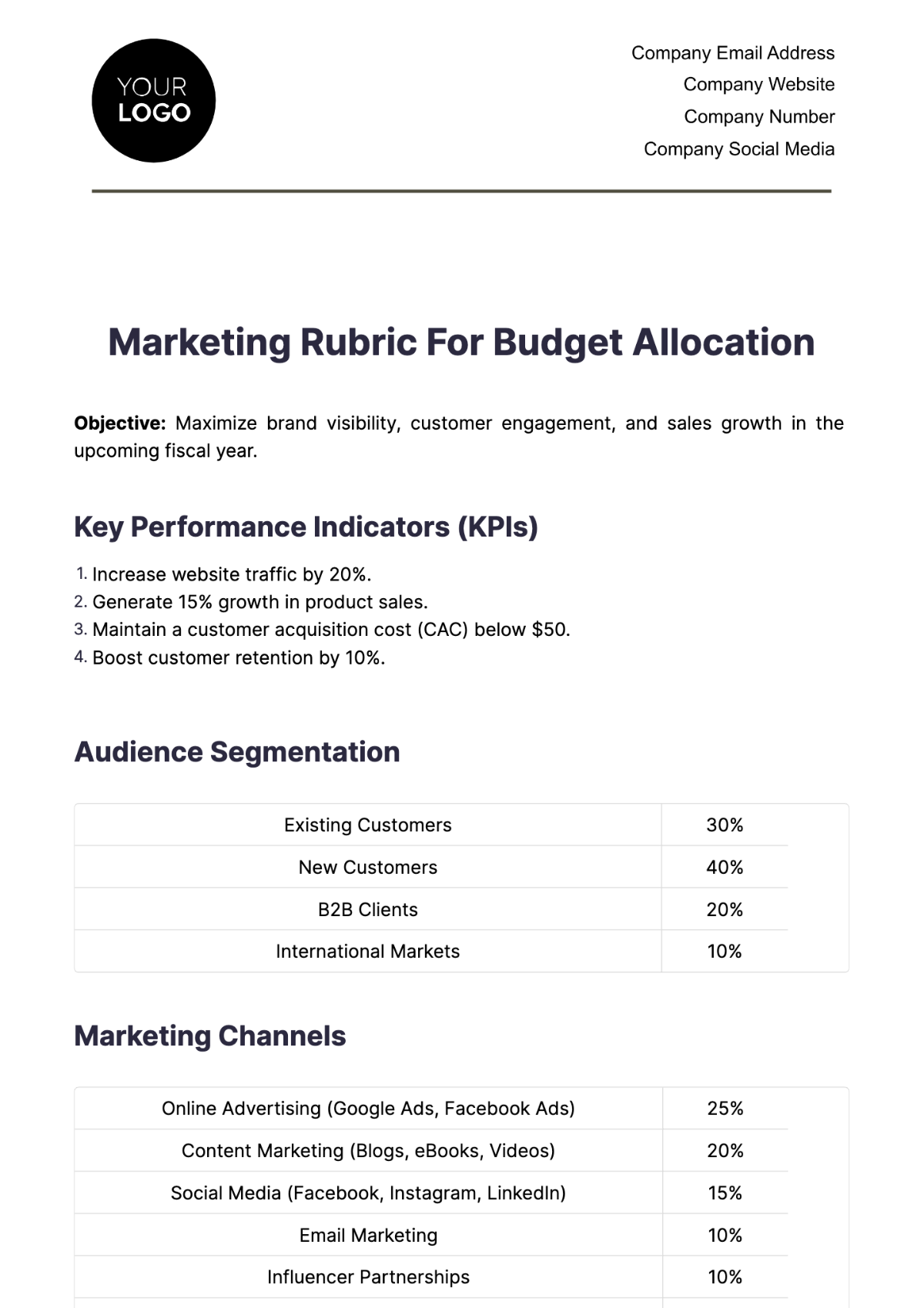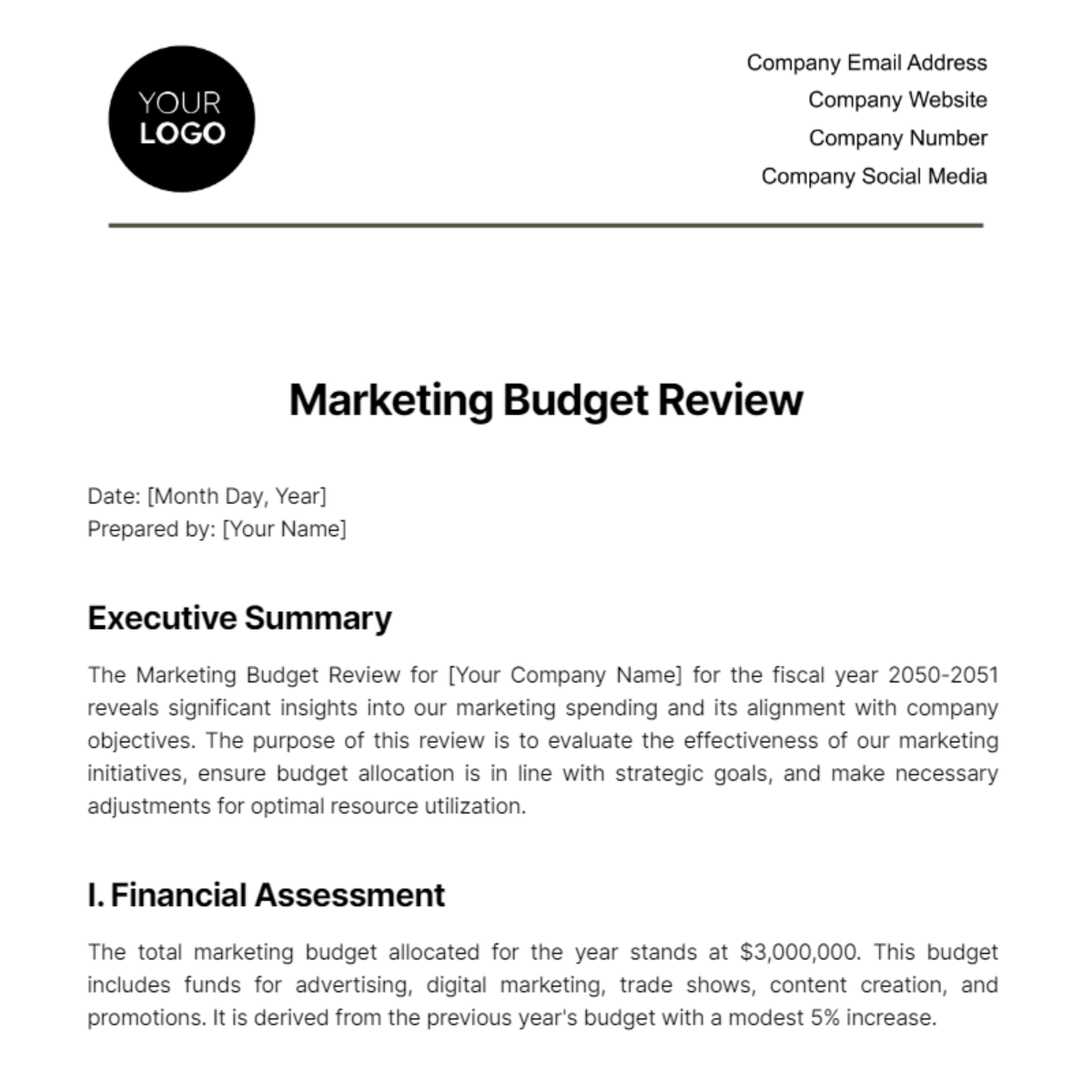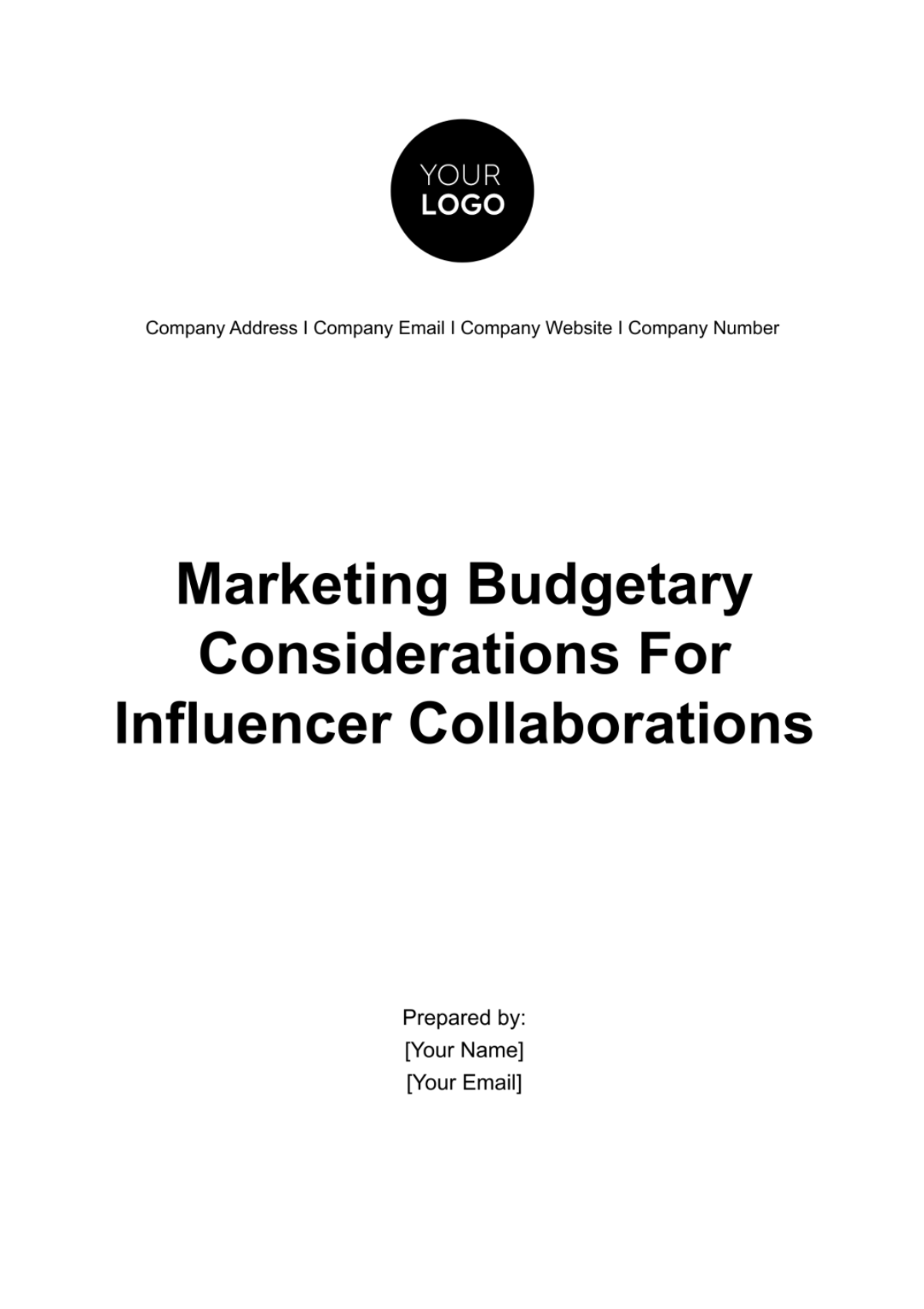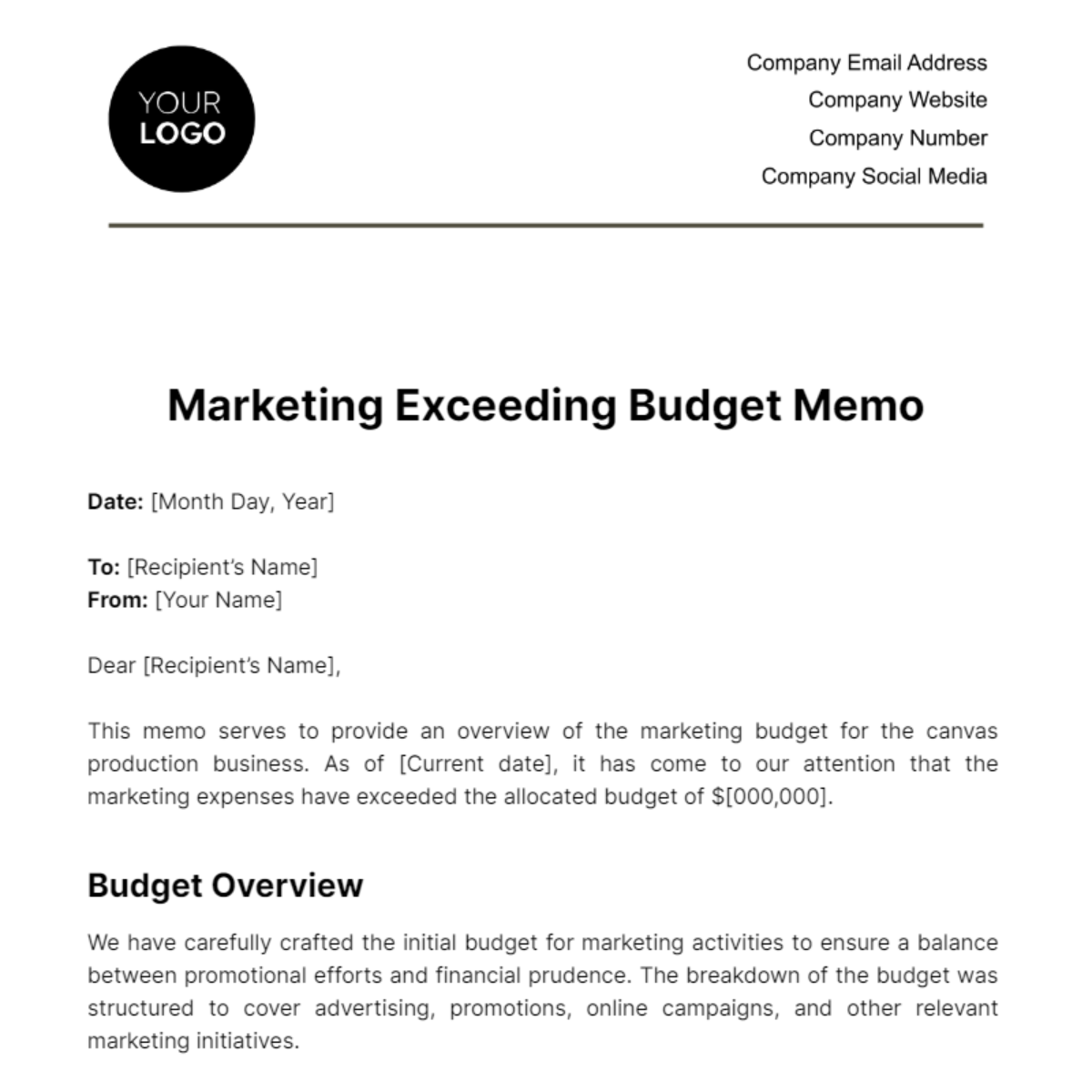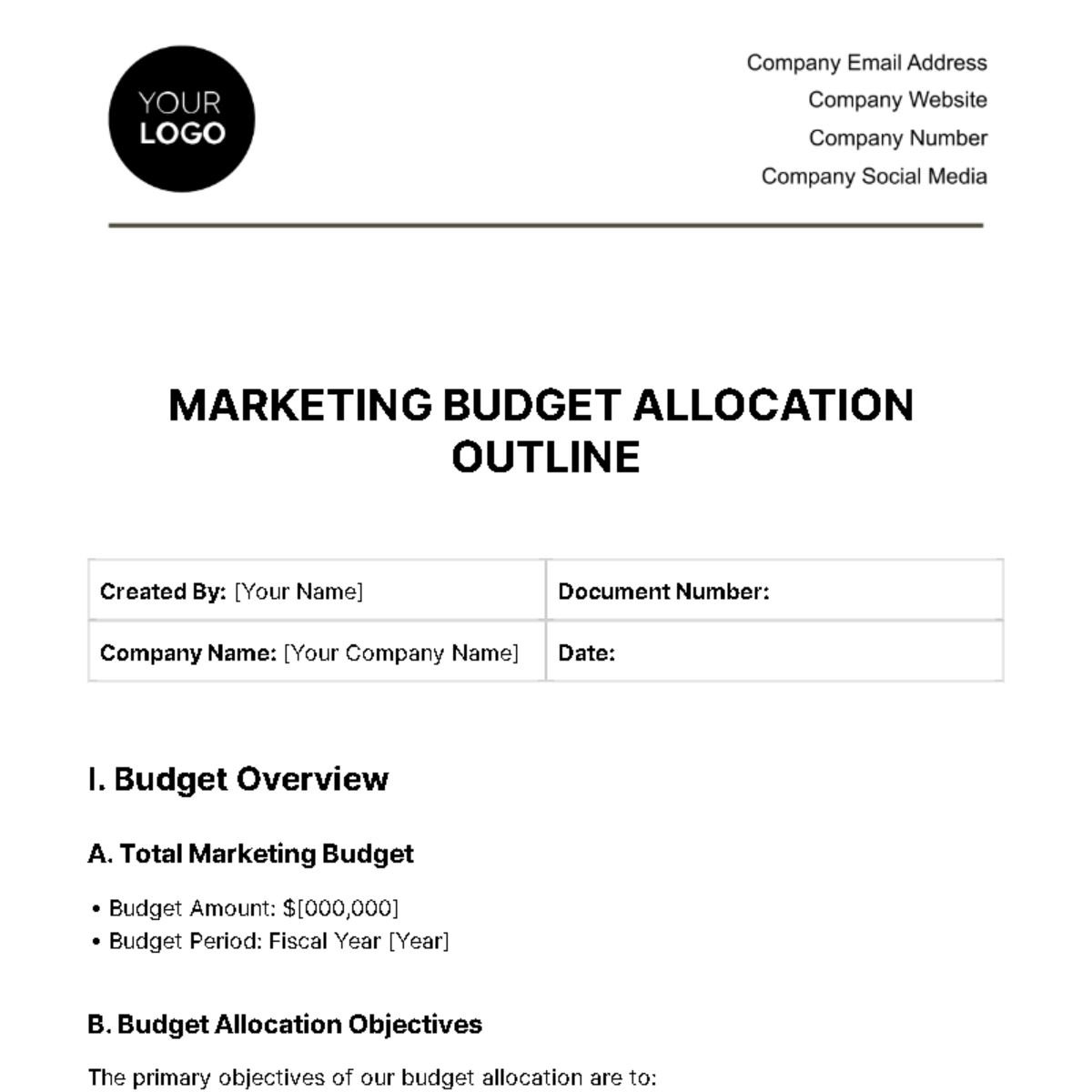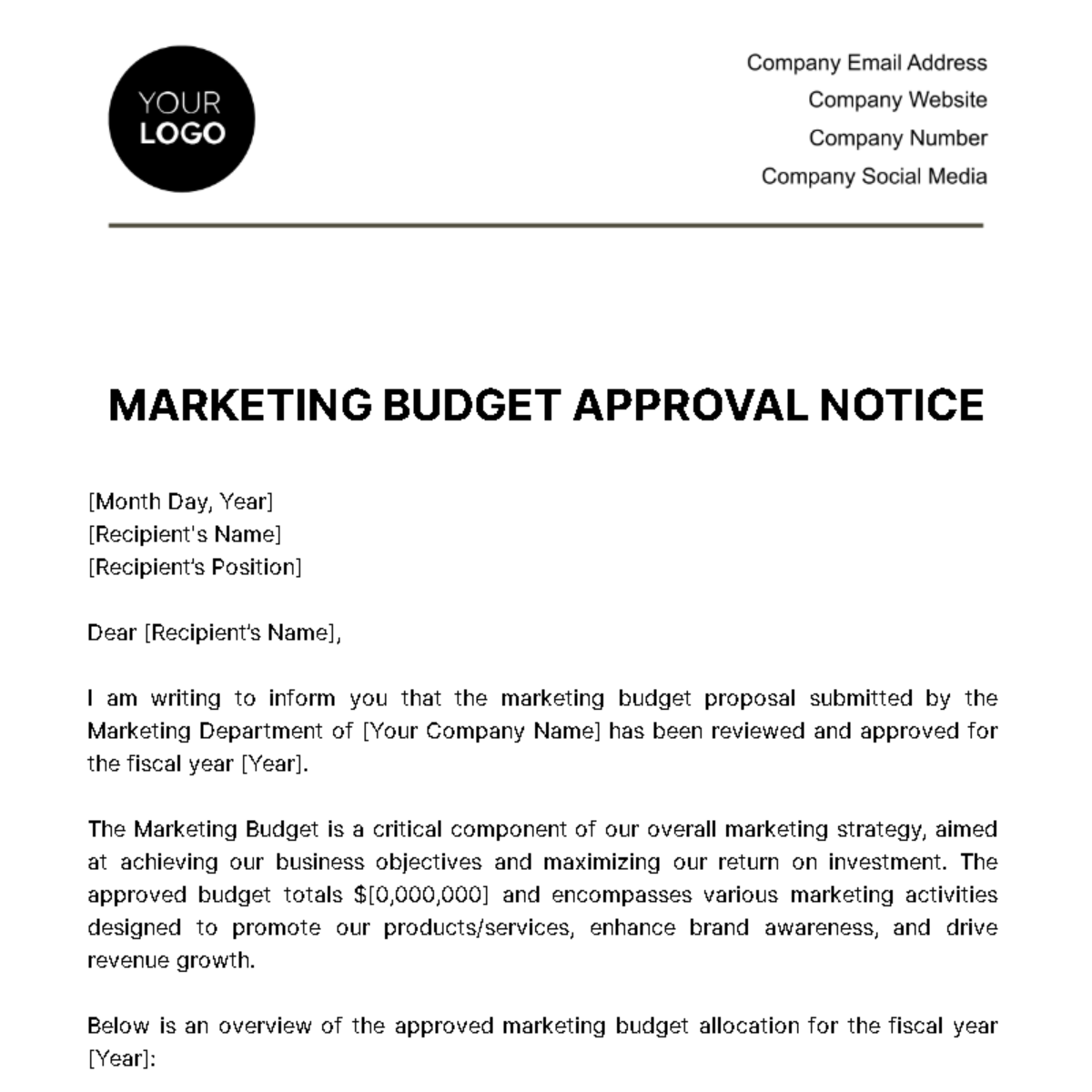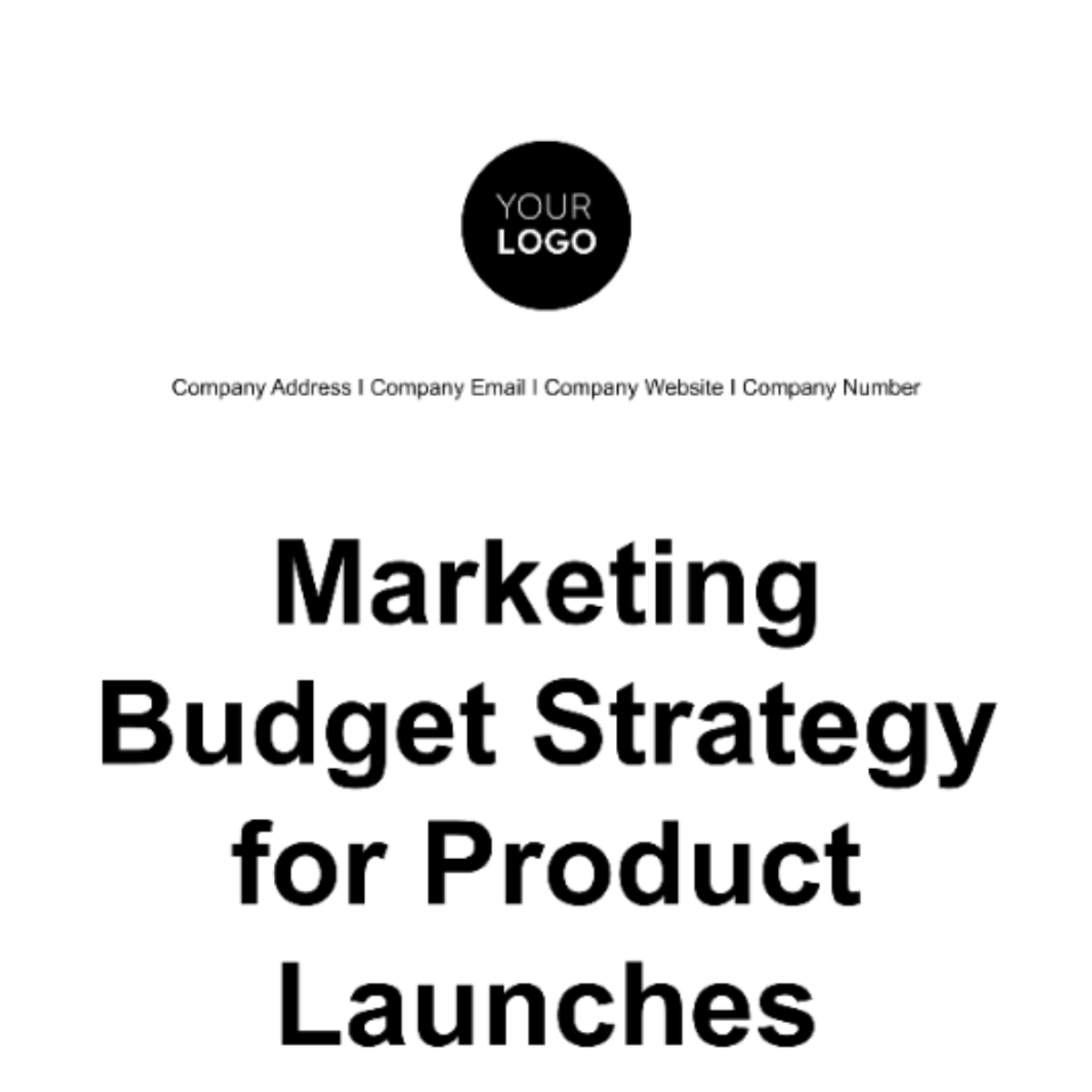Marketing Rubric For Budget Allocation
Objective: Maximize brand visibility, customer engagement, and sales growth in the upcoming fiscal year.
Key Performance Indicators (KPIs)
Increase website traffic by 20%.
Generate 15% growth in product sales.
Maintain a customer acquisition cost (CAC) below $50.
Boost customer retention by 10%.
Audience Segmentation
Existing Customers | 30% |
New Customers | 40% |
B2B Clients | 20% |
International Markets | 10% |
Marketing Channels
Online Advertising (Google Ads, Facebook Ads) | 25% |
Content Marketing (Blogs, eBooks, Videos) | 20% |
Social Media (Facebook, Instagram, LinkedIn) | 15% |
Email Marketing | 10% |
Influencer Partnerships | 10% |
Trade Shows And Events | 10% |
SEO And SEM | 10% |
Referral Programs | 5% |
Emerging Technologies (AR/VR) | 5% |
Competitive Landscape
Stay on par with competitors' marketing efforts while identifying gaps and opportunities.
Testing And Experimentation
Allocate 5% of the budget for testing new marketing channels or strategies.
Seasonality
Allocate 15% extra budget for Q4 to leverage the holiday shopping season.
Customer Lifecycle
Acquisition | 25% |
Engagement And Retention | 30% |
Upselling/Cross-Selling | 15% |
Reactivation Of Lapsed Customers | 10% |
Customer Support And Satisfaction | 20% |
ROI And Cost Analysis
Allocate budget based on expected ROI, with a minimum ROI threshold of 3x the investment.
Emerging Trends
Set aside 5% of the budget for exploring and piloting emerging marketing trends, like virtual reality experiences.
Contingency
Reserve 5% of the budget for unforeseen opportunities or challenges.
Monitoring And Adjustments
Regularly monitor KPIs and adjust the budget allocation quarterly based on performance.
Reporting And Accountability
Establish quarterly reporting and review meetings to assess progress, and assign departmental responsibilities for KPI achievement.
Marketing Templates @ Template.net

